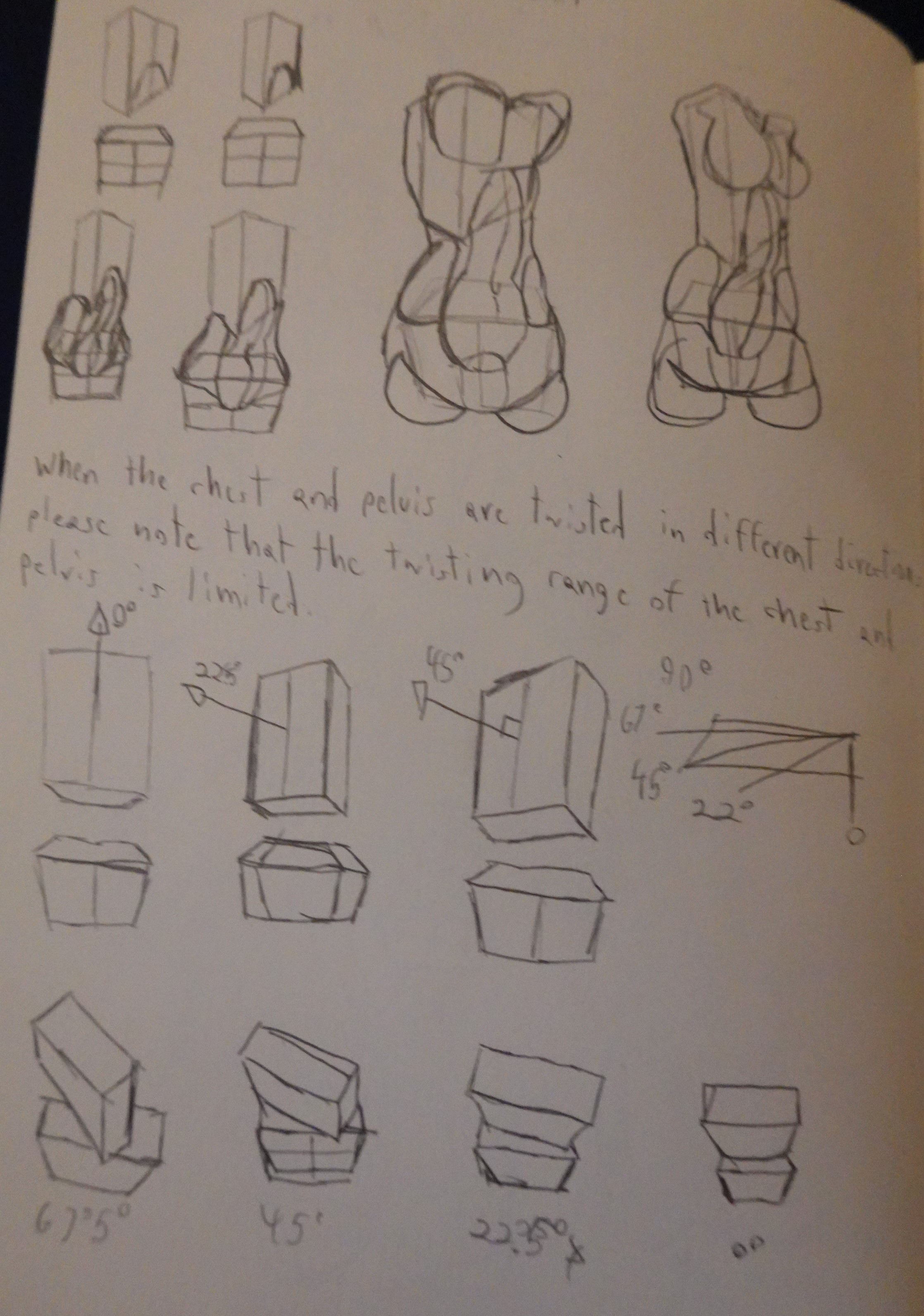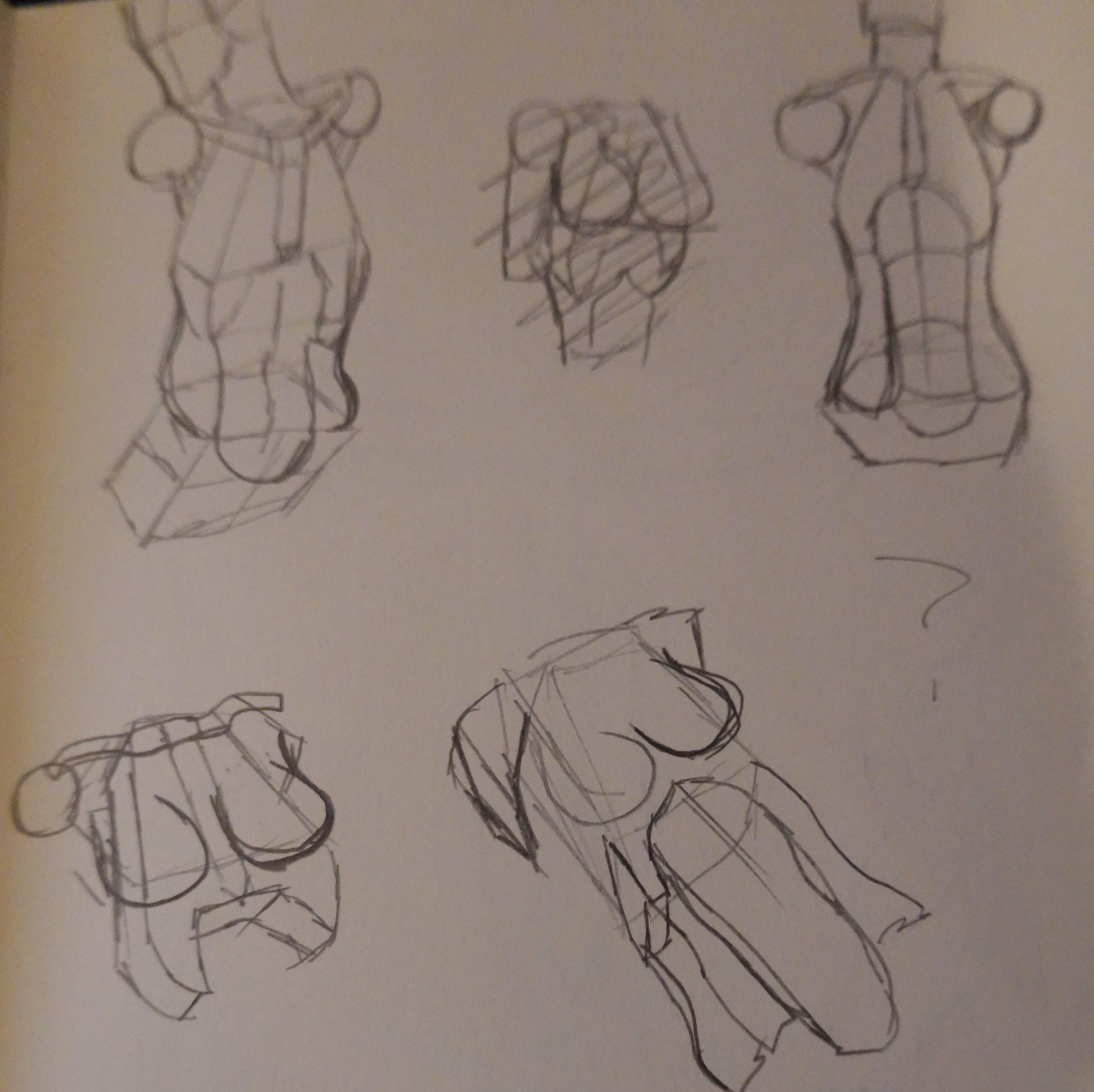Chapter 2 Torso
2 Torso
2.1 Toro Proportion Structure
If you fuck up the torso its hard to fix the whole drawing
2 .1.1 Proportions
Male Chest wider than female chest
Female pelvis is wider than male chest
Male ball joint is slightly larger than female joint, distribution is slightly wider results in male shoulder being much wider than female shoulder
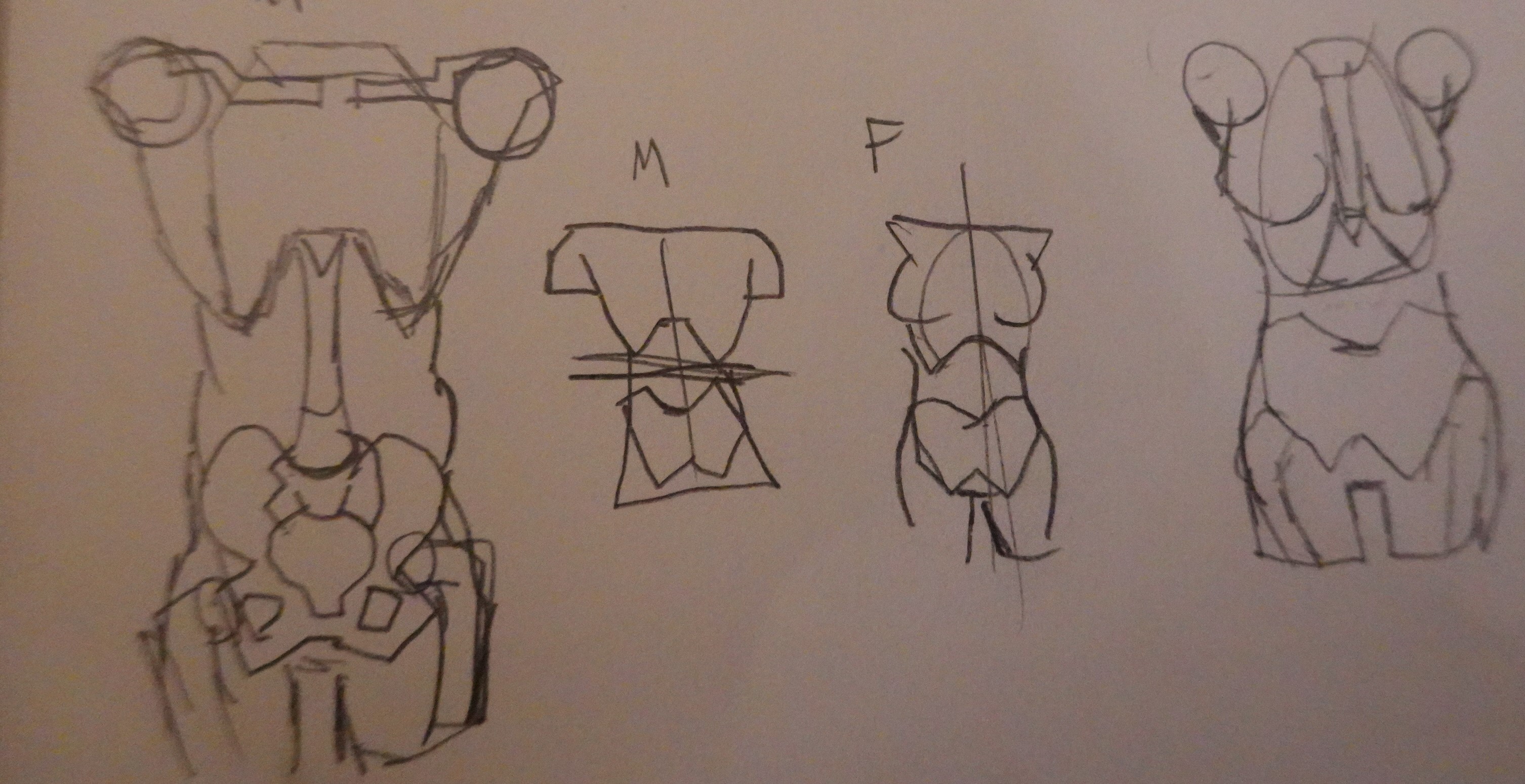
2.1.2 Structure the trunk
Simplify the structure of the torso to geometric shapes to better understand it.
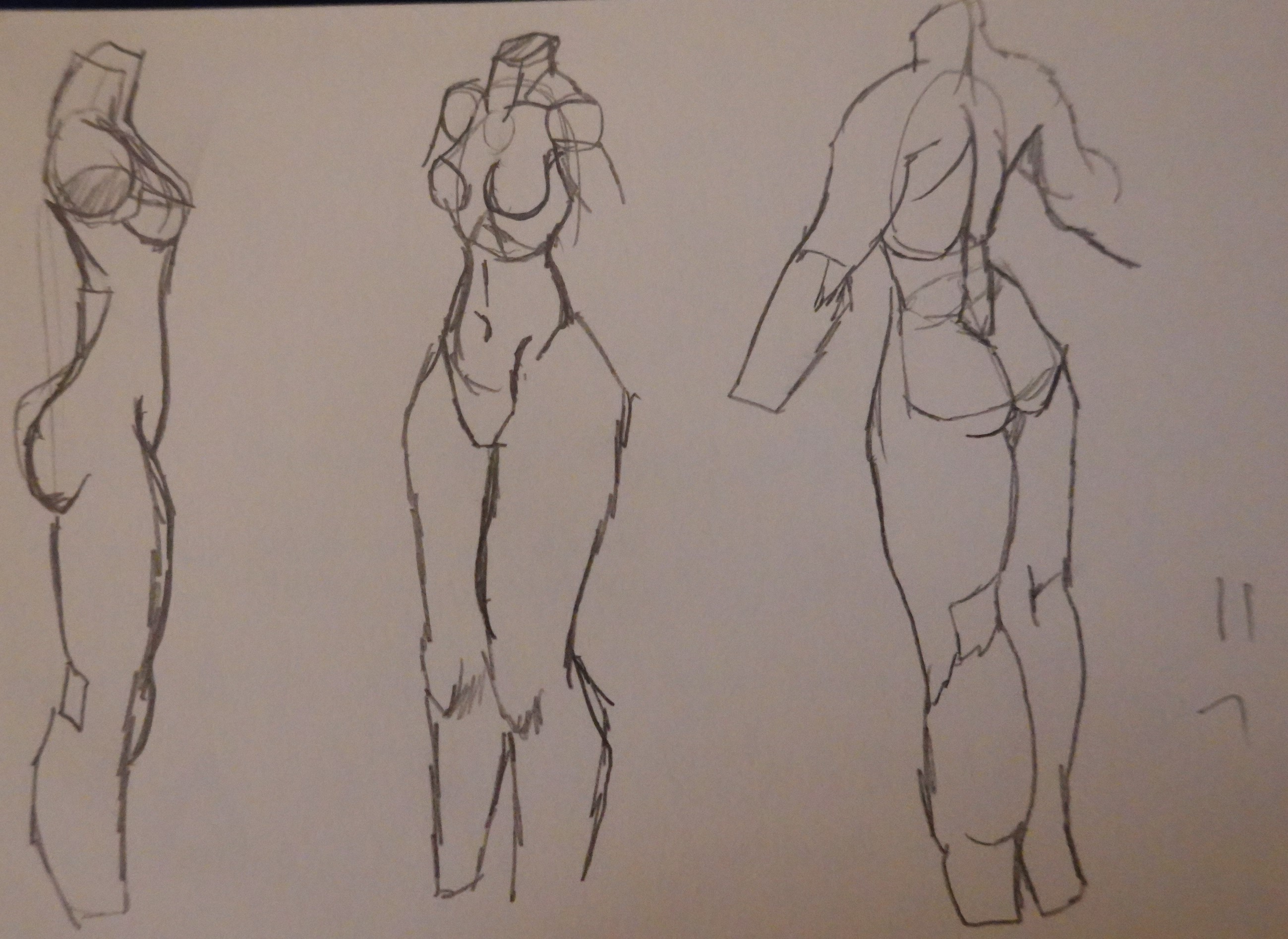
2.2 Thoratic Cavity
Proportions are important on this since it plays a connection role in the whole of the body
2.2.1 Basic Proportions of the Thorax
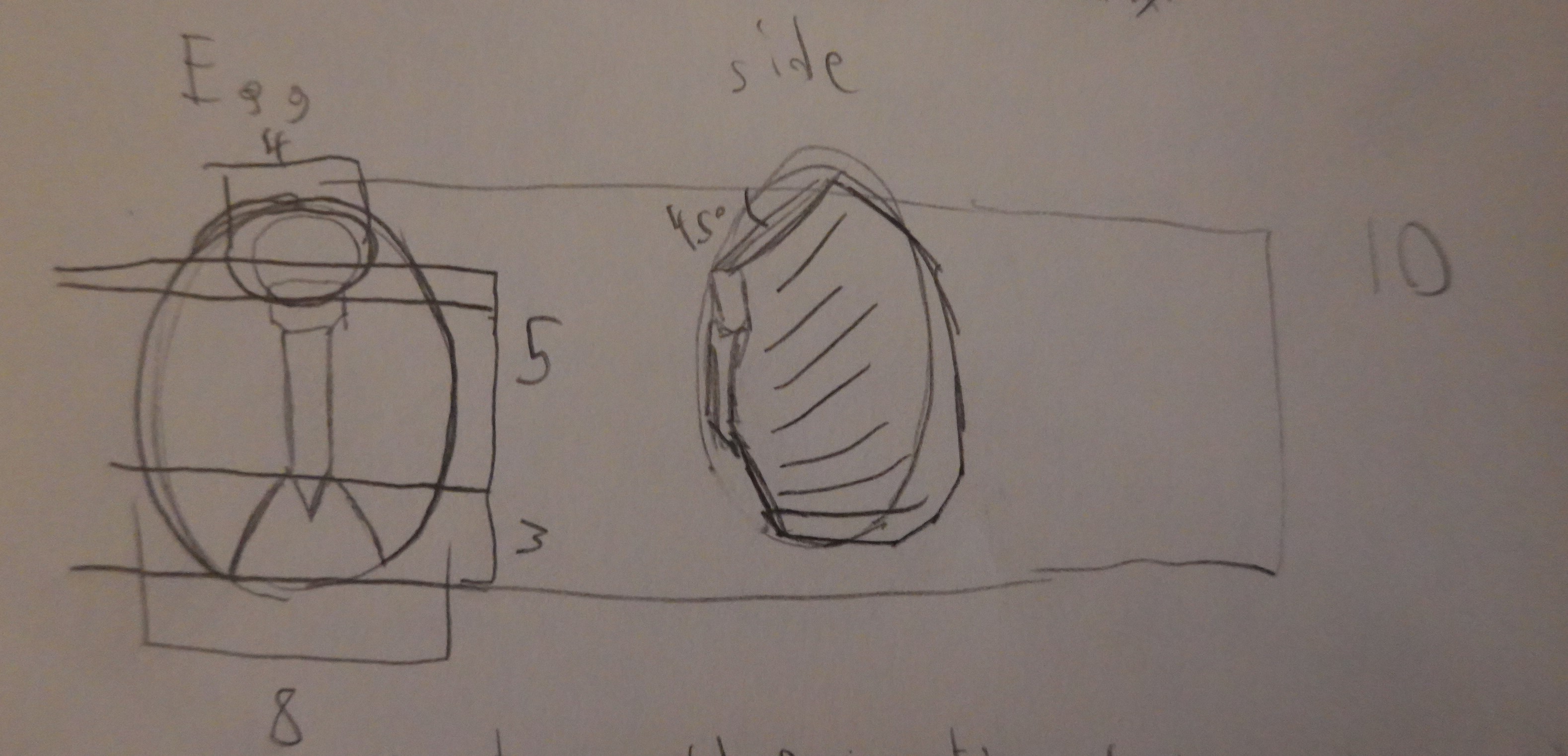
2.2.2 Structure and Perspective of Thoracic Cavity
Simple:
Clavicle and Sternum form the shape of a bicycle handle bars
Clavicle and Shoulder blade form a ring around the Thoracic Cavity
Long Tubular Spine

2.2.3 Arm Joint and Thorax
The ball of the arm joint is connected to the thorax and is about the size of the deltoid muscle

2.2.4 Muscle of the Chest
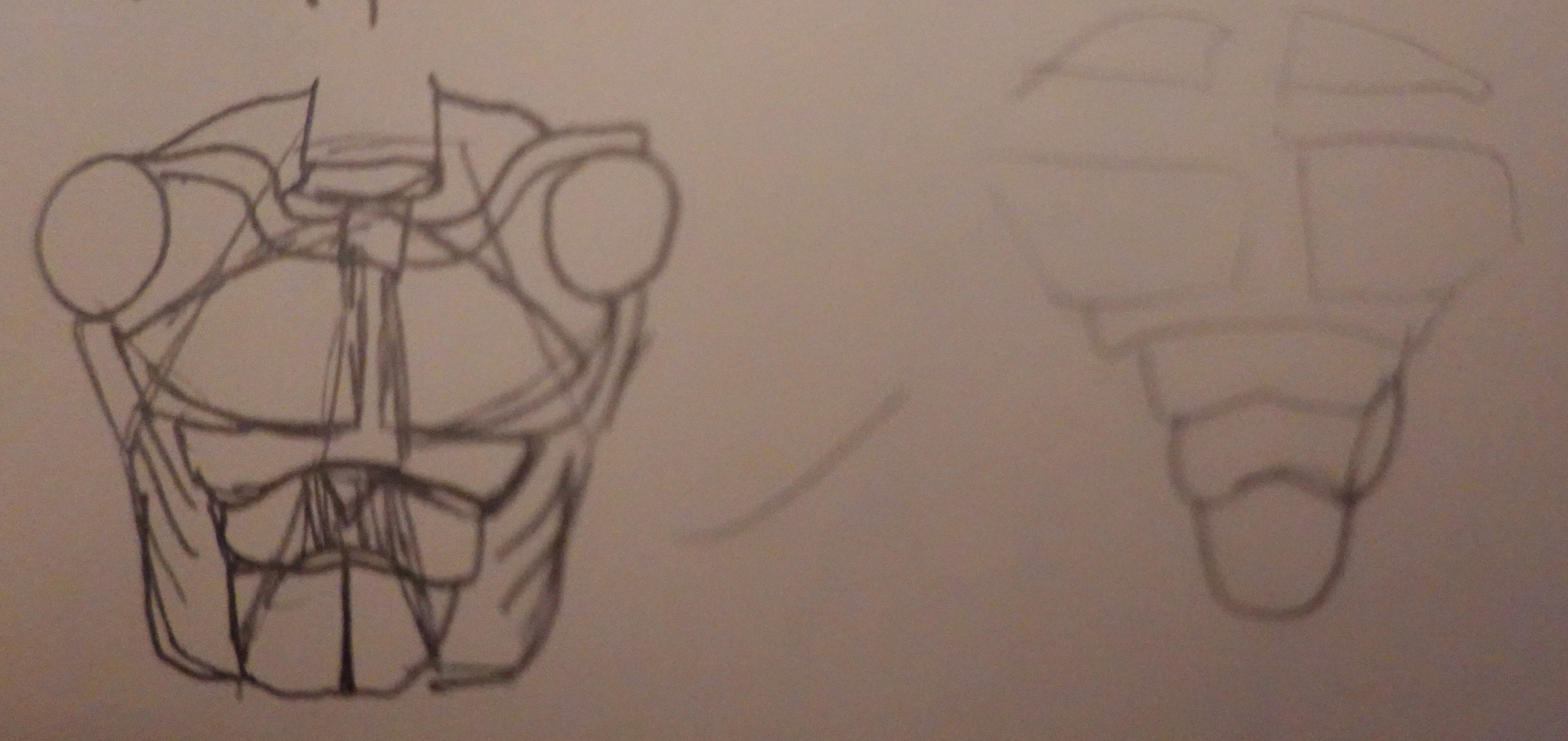
2.2.5 Female Chest
Muscle structure is not needed as much but you can add blocks to represent the breasts as needed

2.3 Pelvic Proportions and Spatial Cognition
This is needed most to simplify because of the many variations it can have.
2.3.1 Pelvic Proportions
Male: Length and Width ratio of the male pelvis is closer from front, the side there is no tilt
Female: Wider and does have a tilt from the side

2.3.2 Structural Simplification of the pelvis and spatial cognition.
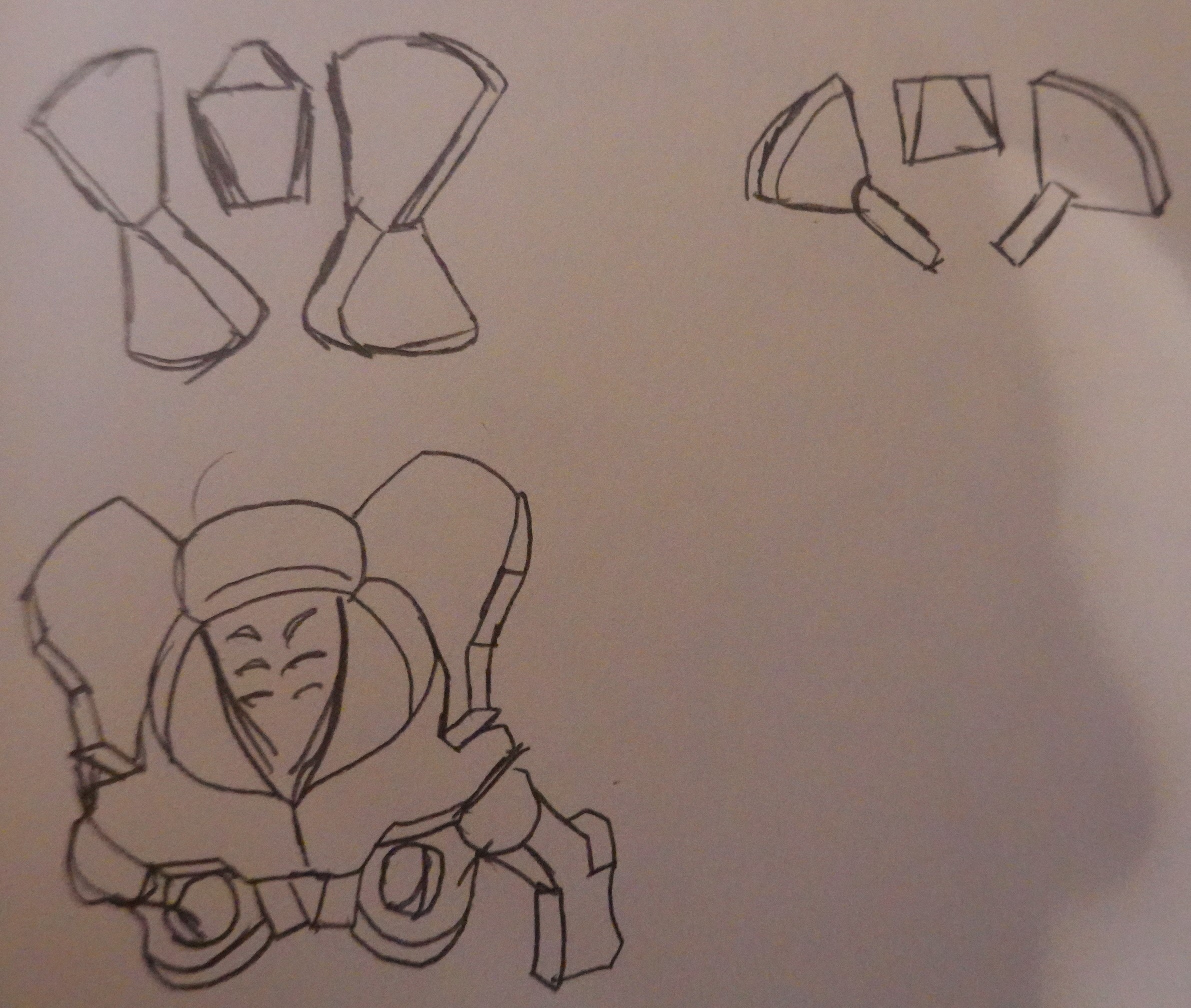
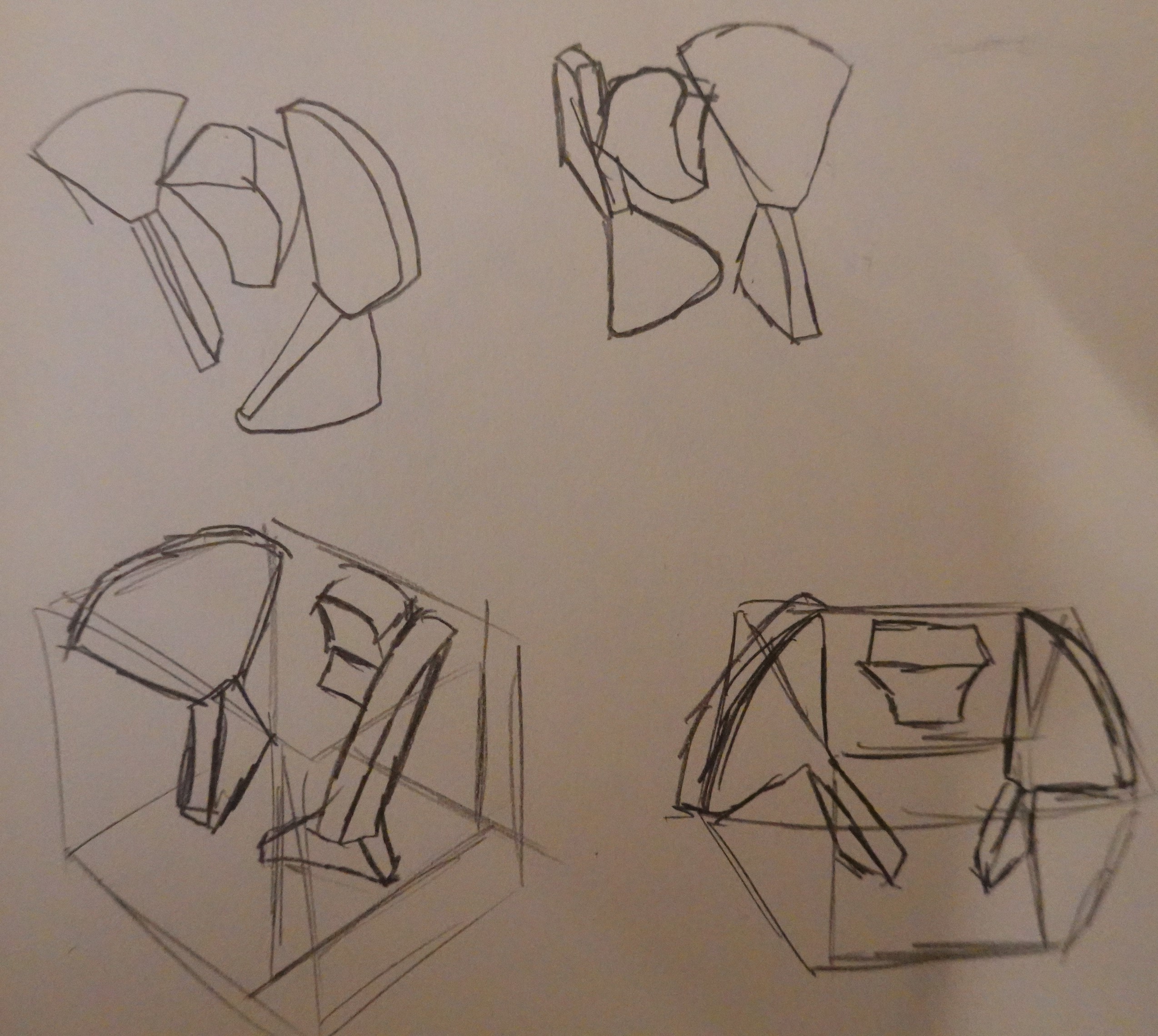
1. Draw rectangle block with appropriate proportions
2. Determine position of the coccyx in the rectangle
3. Determine the spatial relationship of the fan
4. Draw an ellipse at the bottom to determine the position of the two triangles

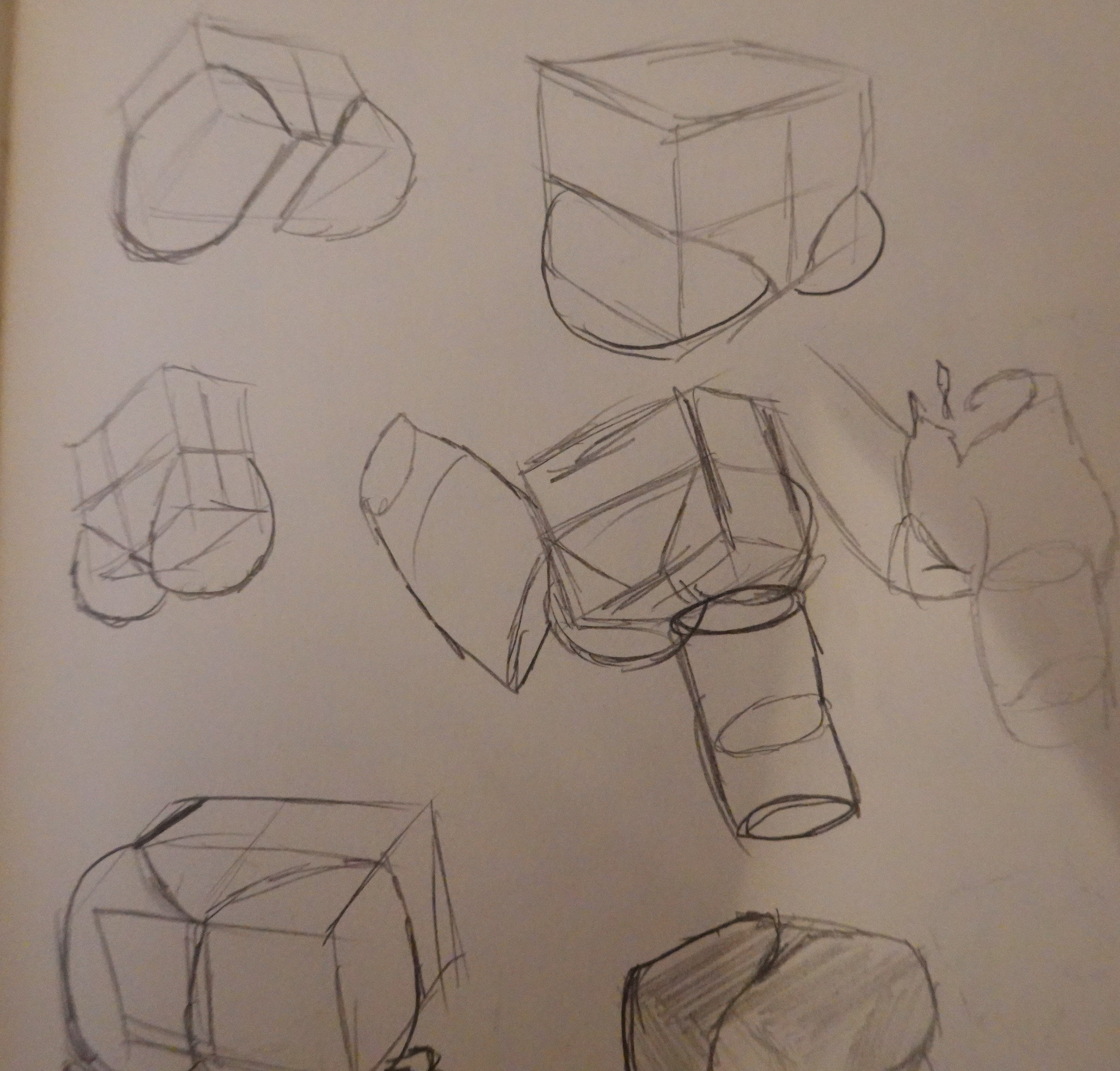
2.3.3 Influence of Pelvis on hip drawing
Main differences in the male and female hips is the ratio of the length, width, and height of the pelvis.
Using a rectangular block as reference, female pelvis is wider so the greater trochanter of the femur is slightly wider than that of the male.

2.4 Effects of trunk bones and muscles on body surface performance
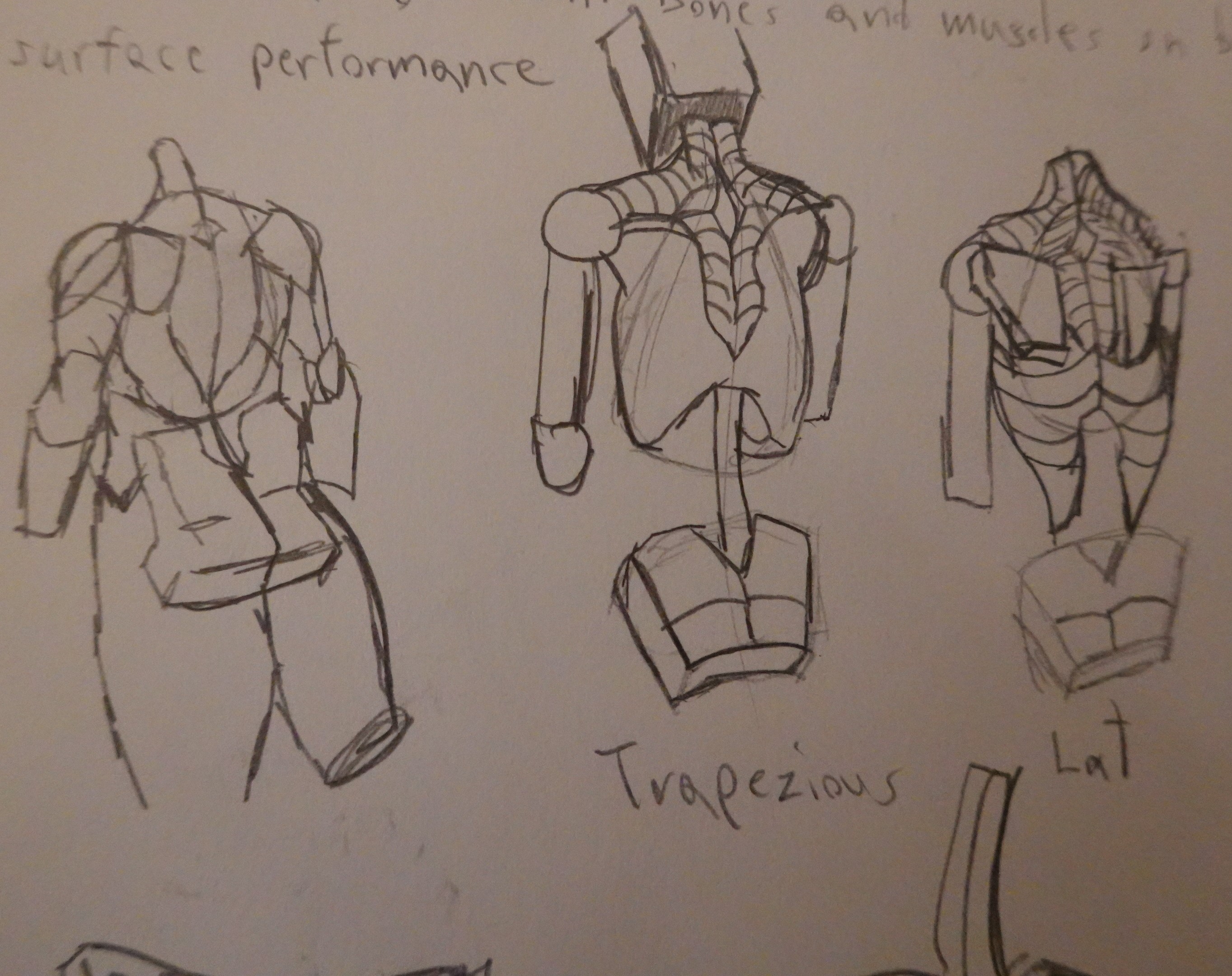
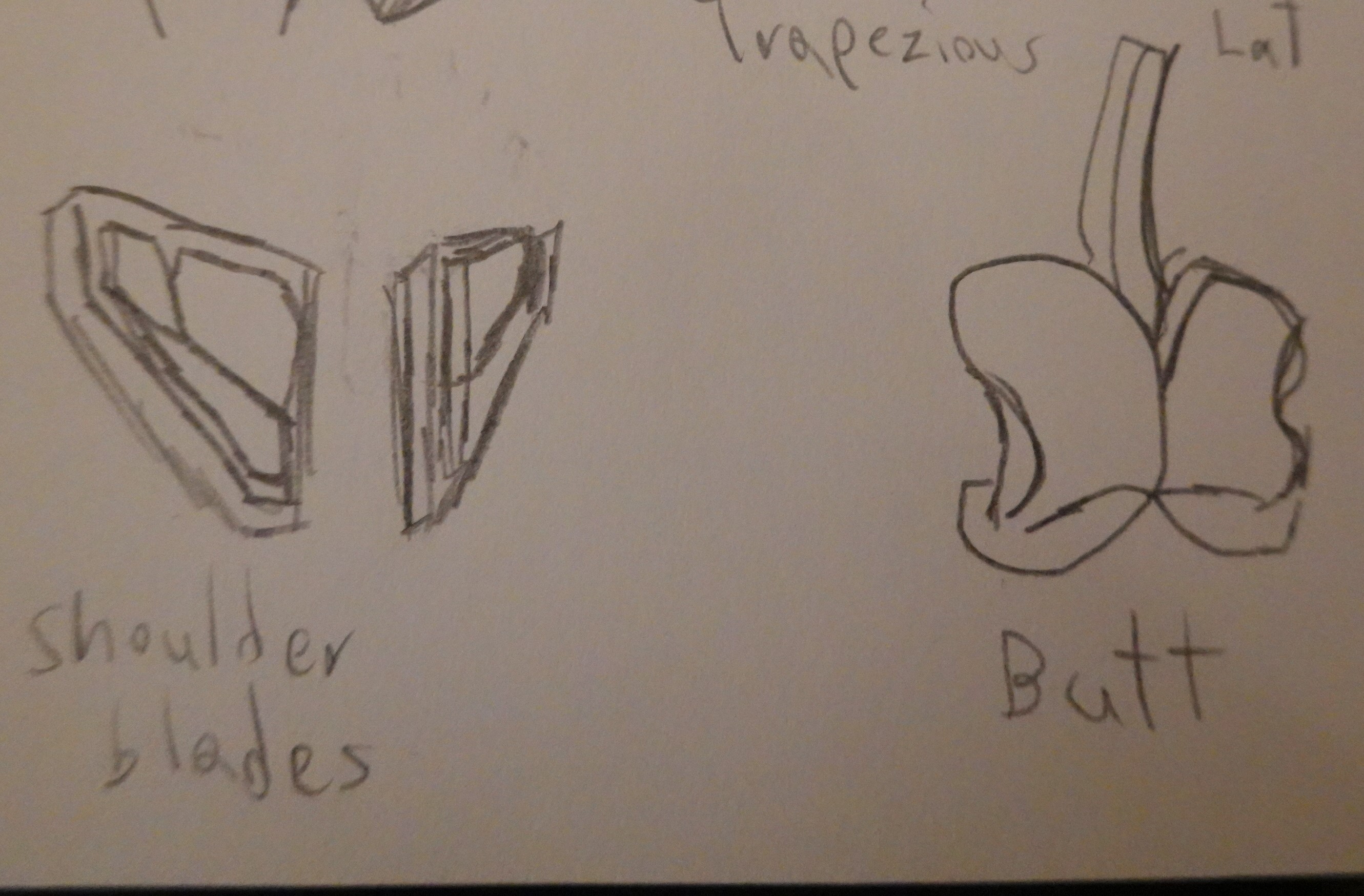
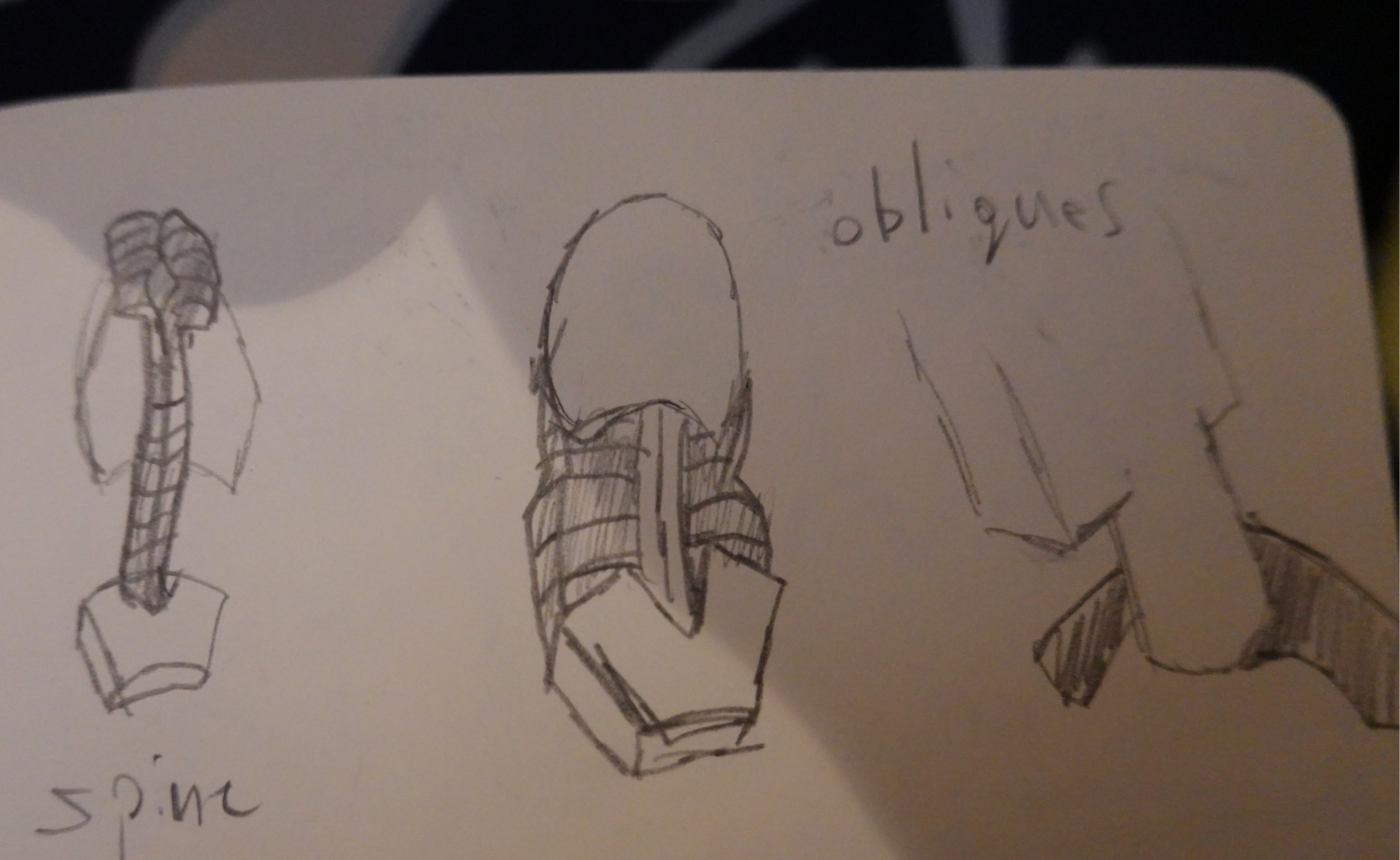
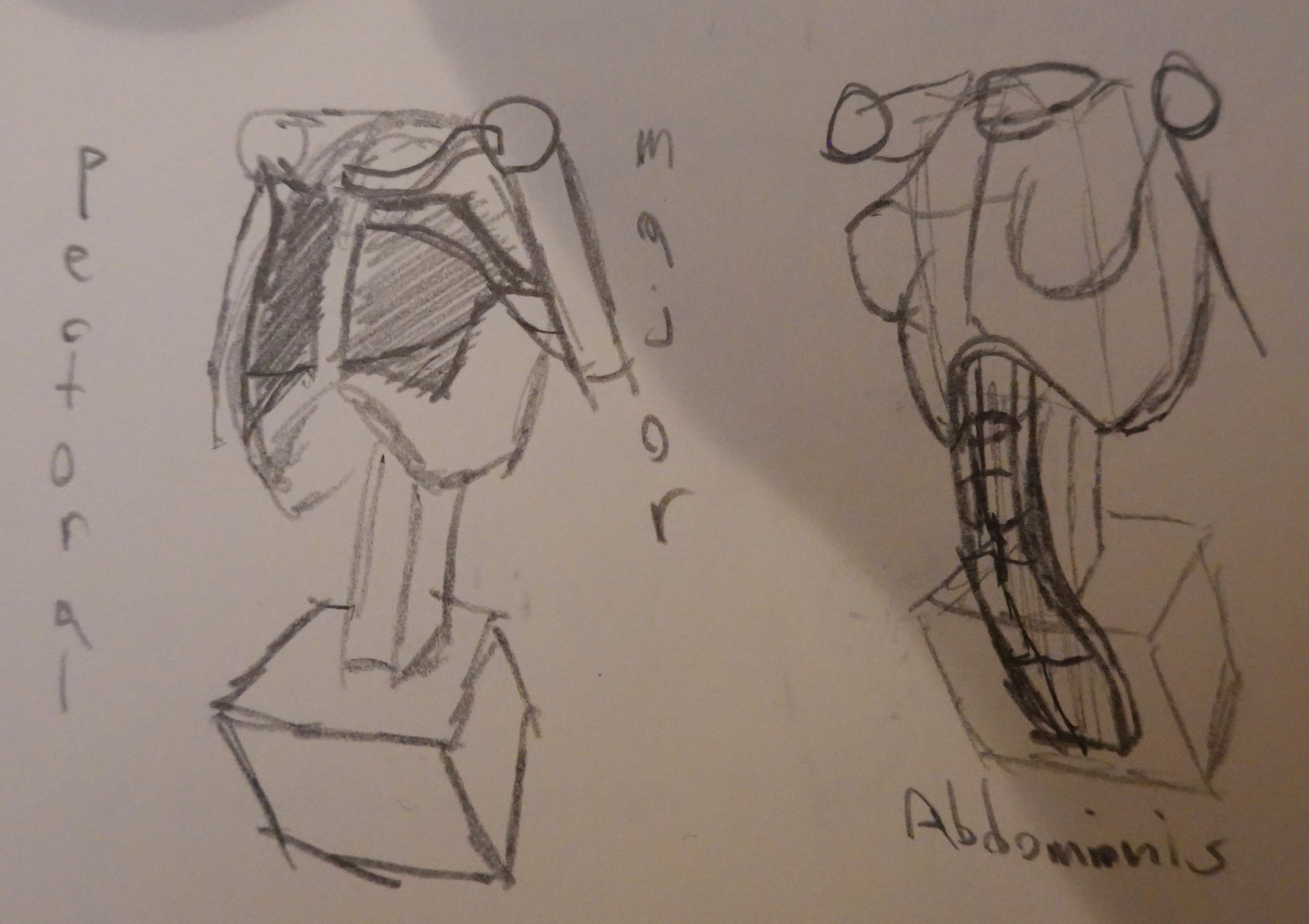
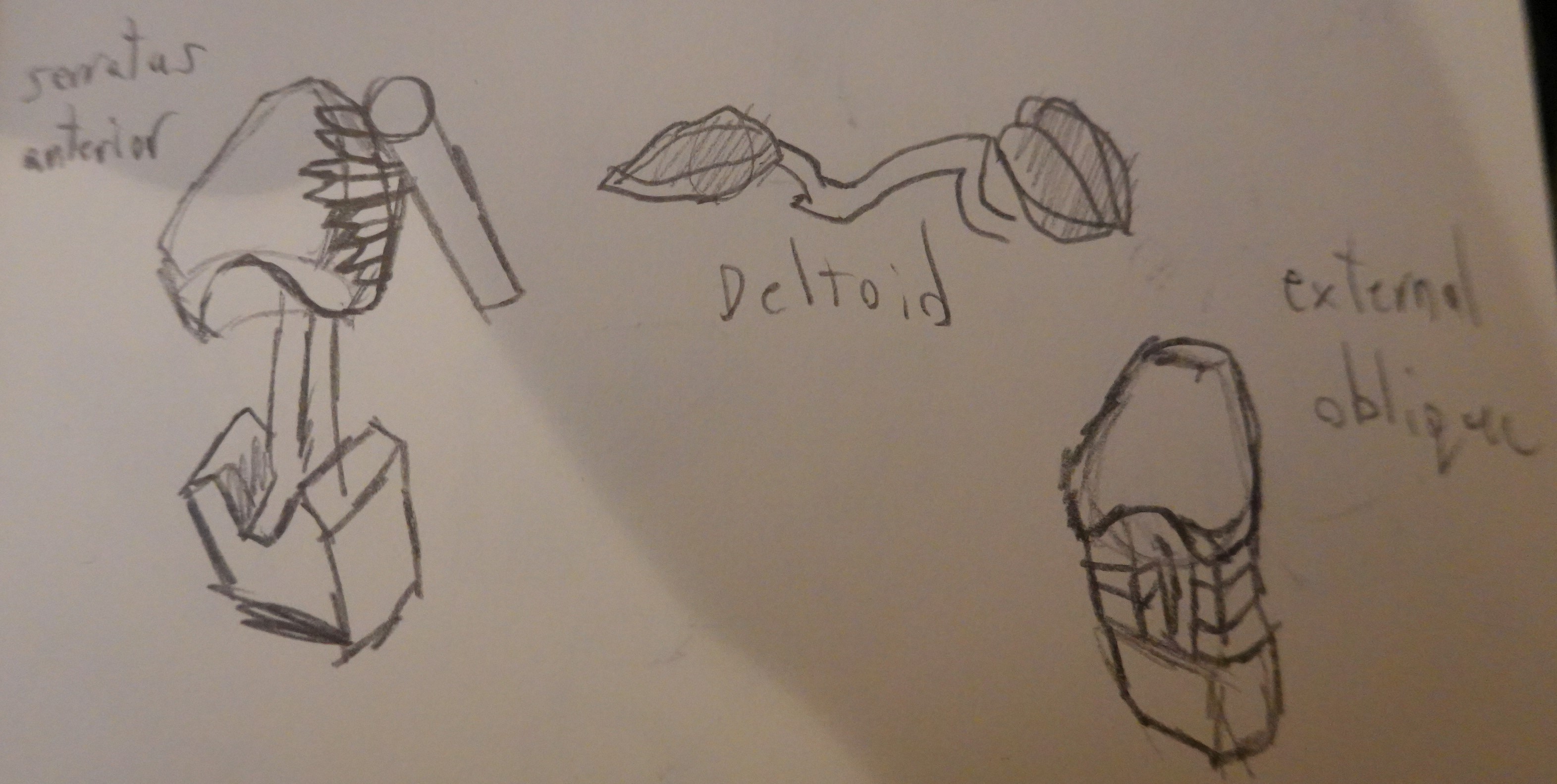
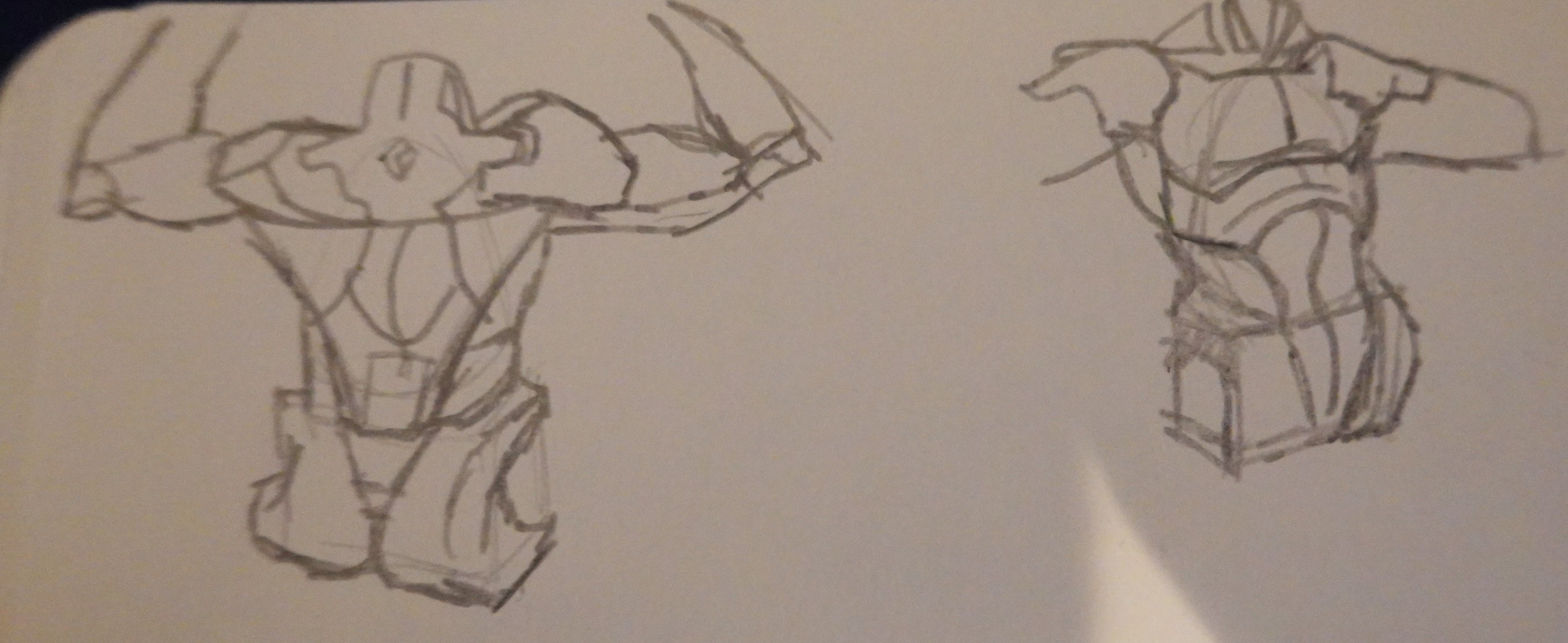
2.4.1 Influence of shoulder blade and muscle groups on body surface performance
Think of the shoulder blade, clavicle and arm as a unit when the arm moves the clavicle and shoulder move accordingly.
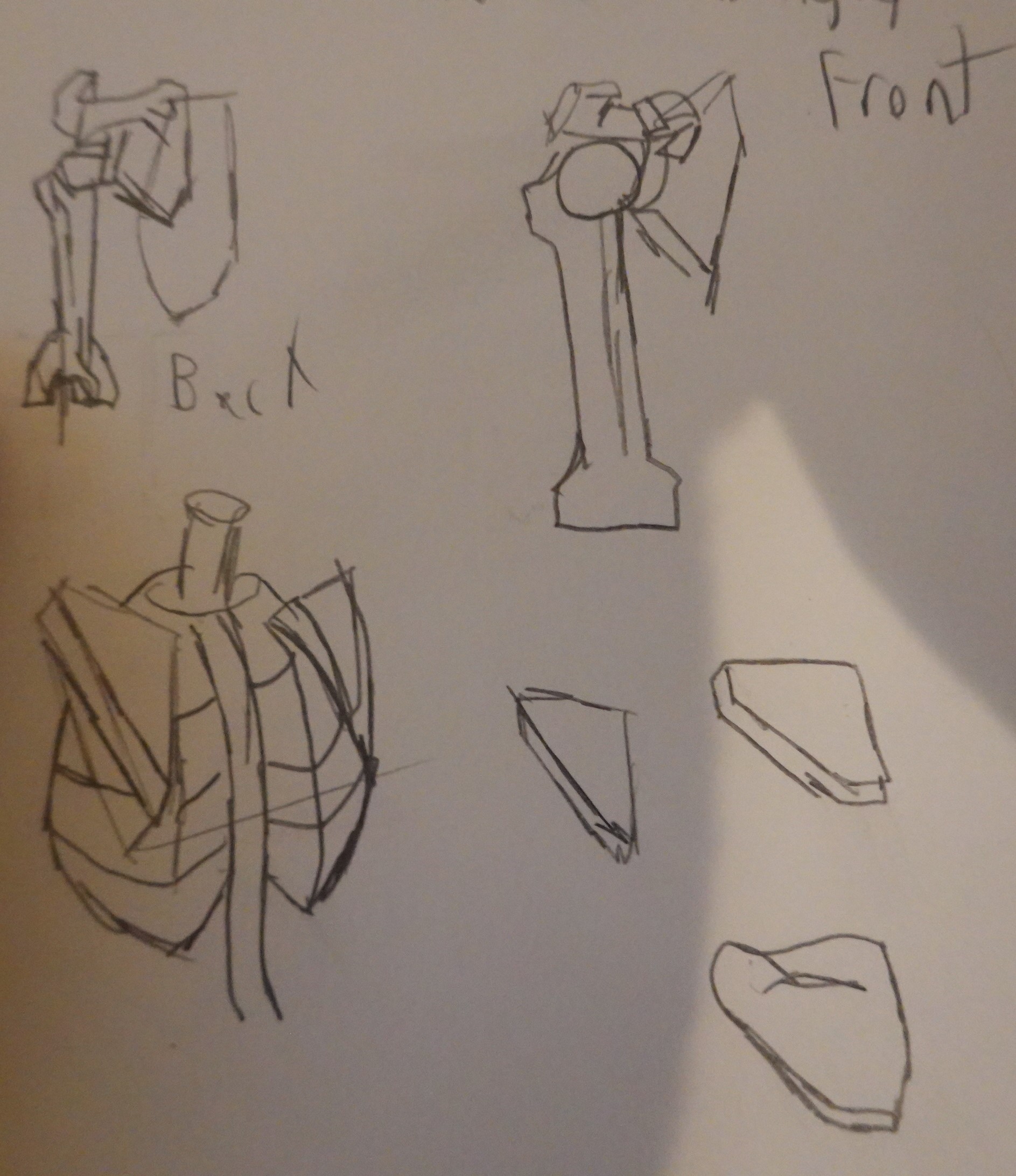
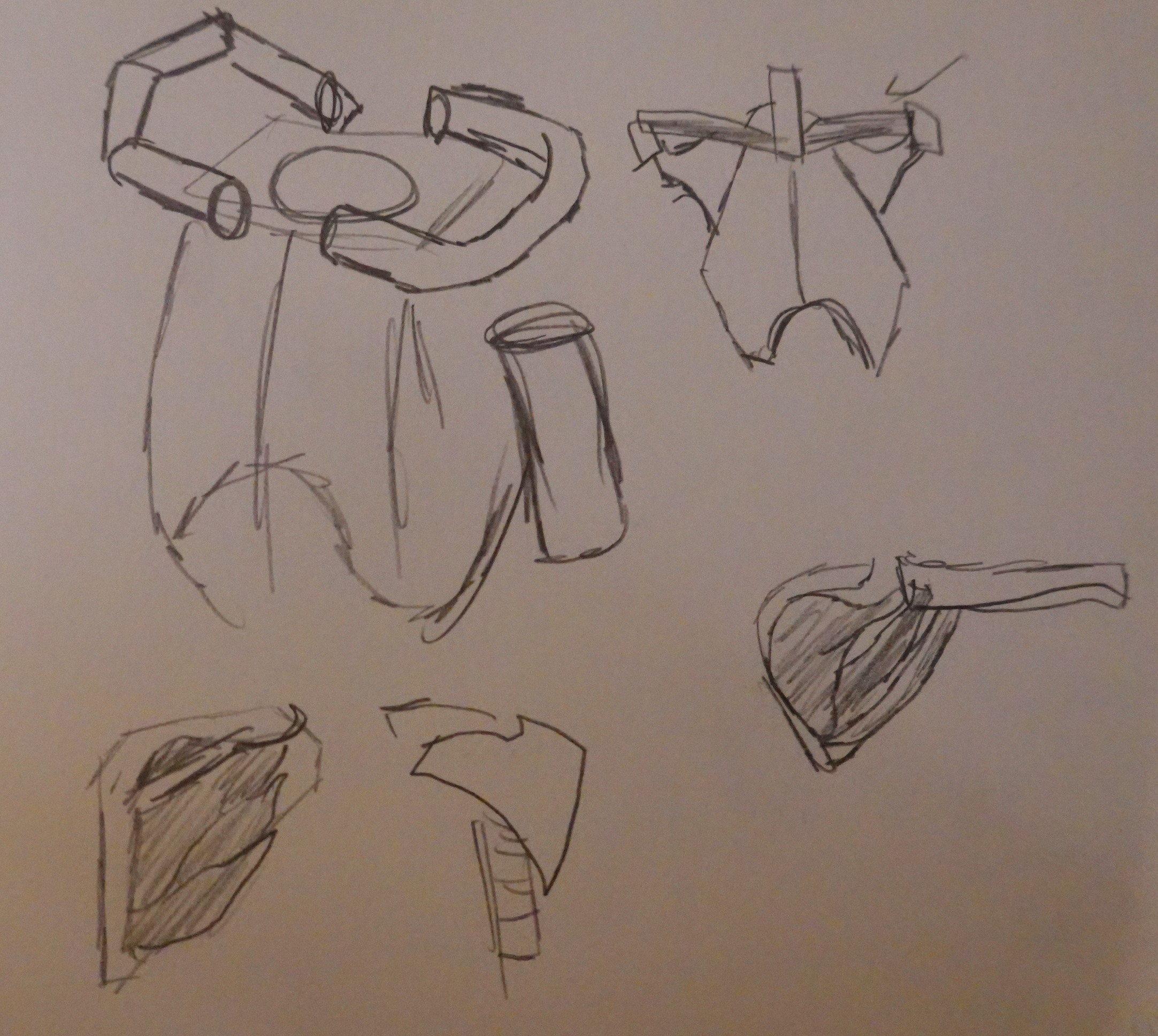
2.4.2 Effects of Sternocleidomastoid muscle on body surface manifestations
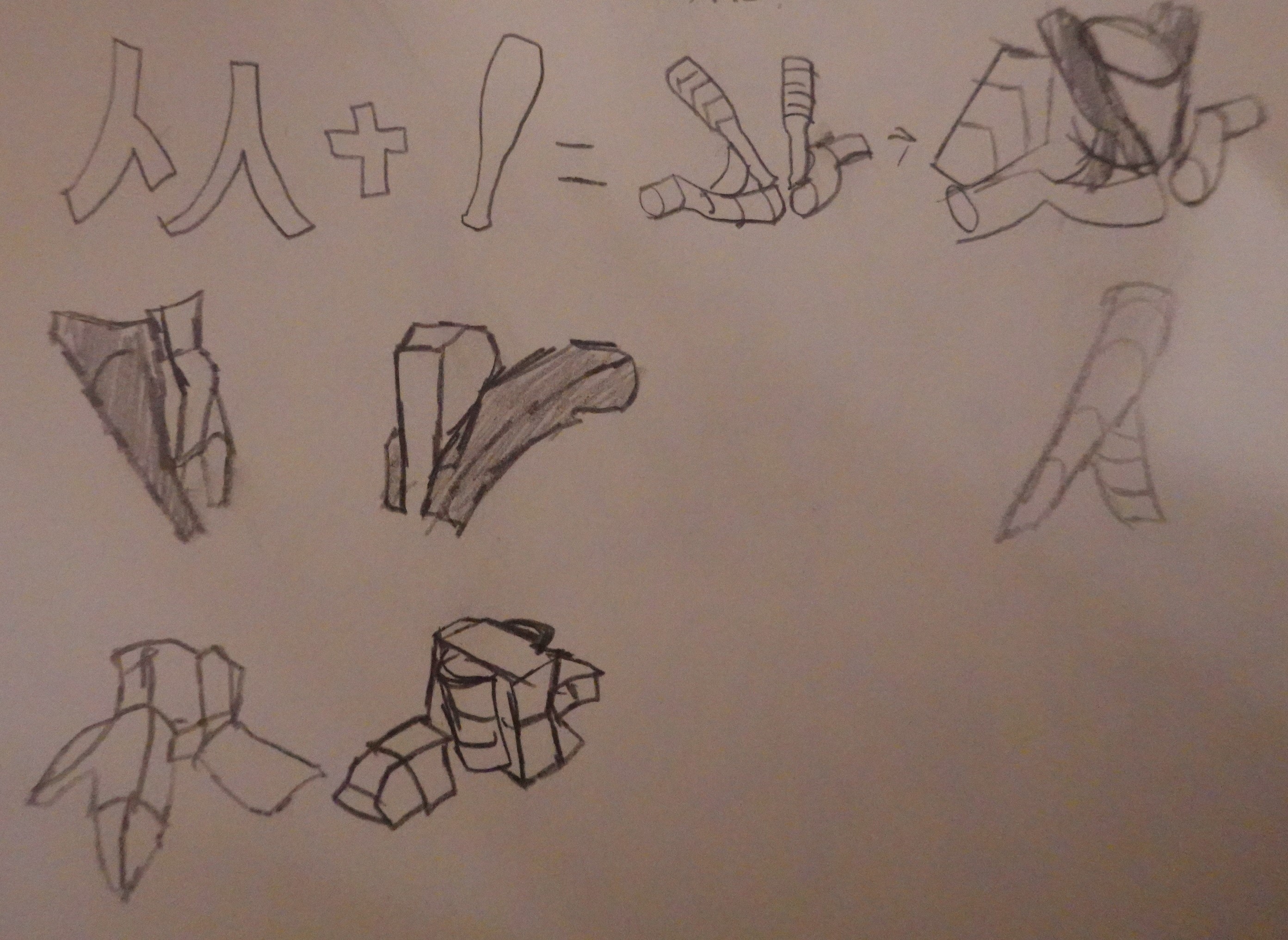
2.4.3 Influence of trapezius muscle on body surface performance
The rotation and lifting and pulling of the scapula mainly rely on the movement of the trapezius muscle.
Starts at the base of the skull and goes down to the 12 thoracic vertebra.
The trapezius muscle grows along the outer V 3 of the clavicle and the edge of the upper part of the scapula and ends at spinal tuberosity.
Trapezius simplifies to a dagger shape
Handle = base of the skull
Sides = muscles of the shoulder blade
Blade = extending downward on spine

2.4.4 The influence of deltoid muscle on body surface performance
Location subcutaneous on shoulder shape of inverted triangle.
Origin: Lateral half of clavicle acromion and scapular spine.

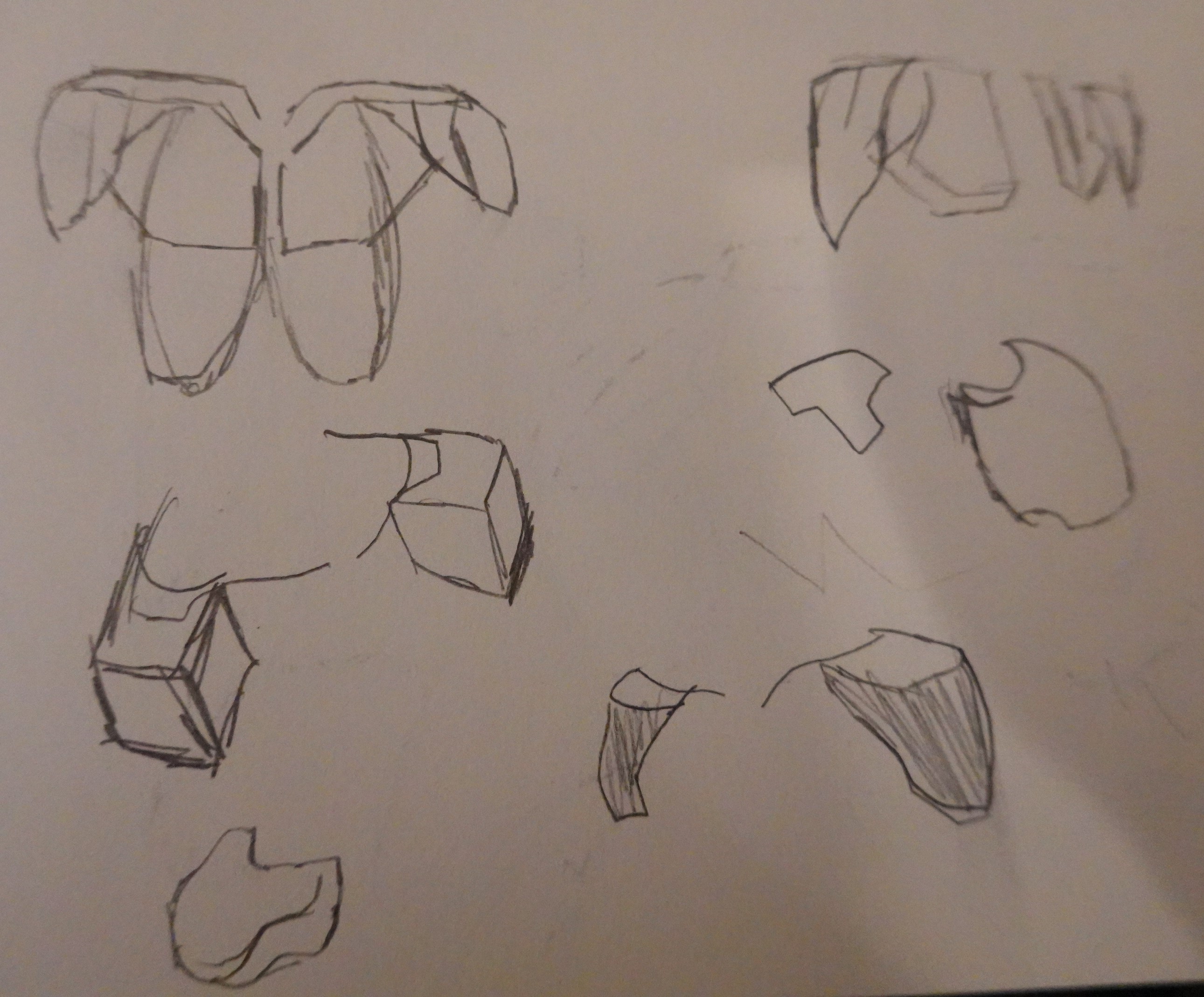
2.4.5 The influence of the pastoral major muscle on body surface performance
Function: When fixed near, it can flex, adduct and internally rotate the shoulder joint.
When fixed far it can pull the torso closer to the upper arm and lift the ribs to help inhalation.
When drawing we can image as a fish without its head.
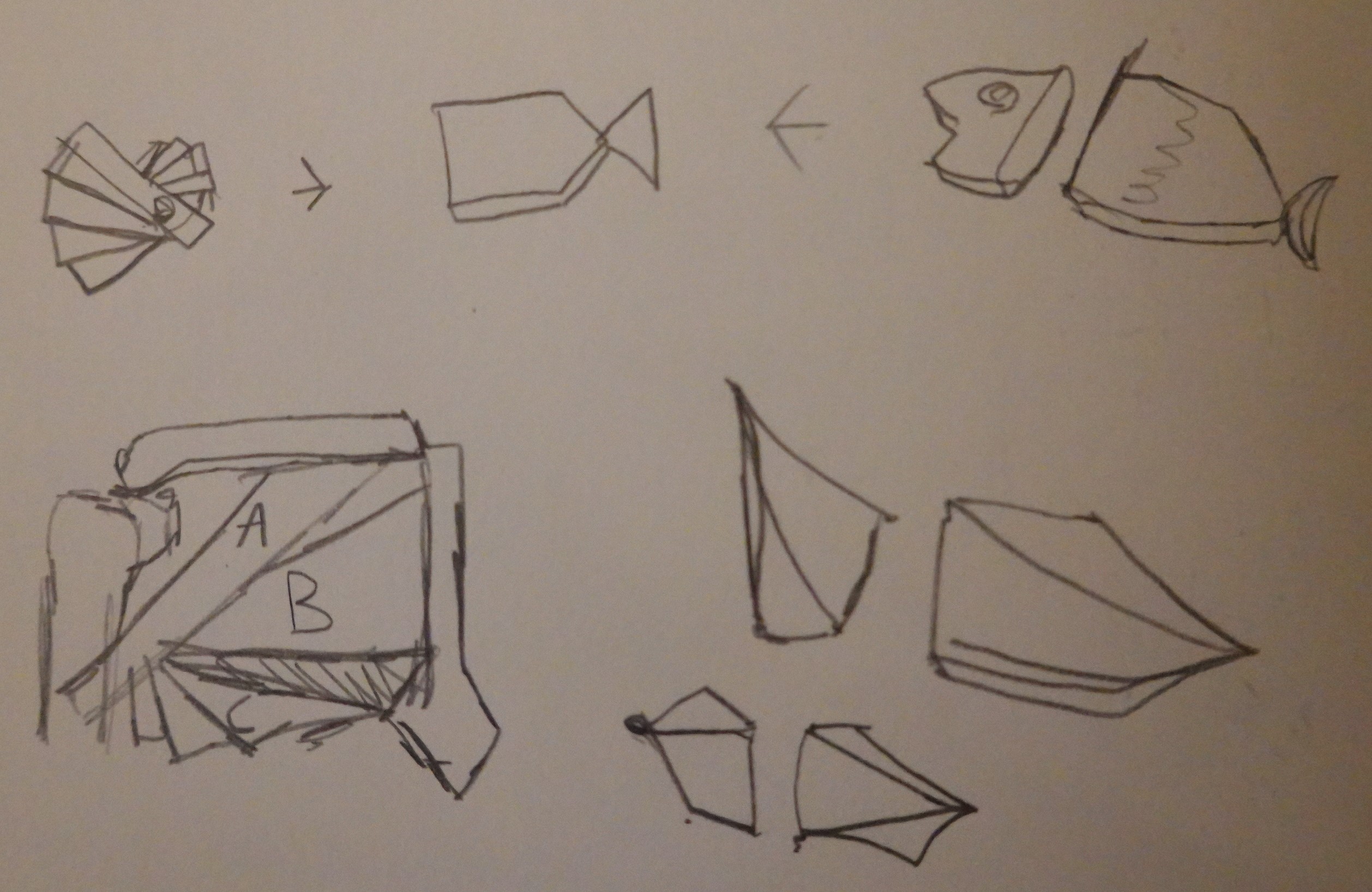
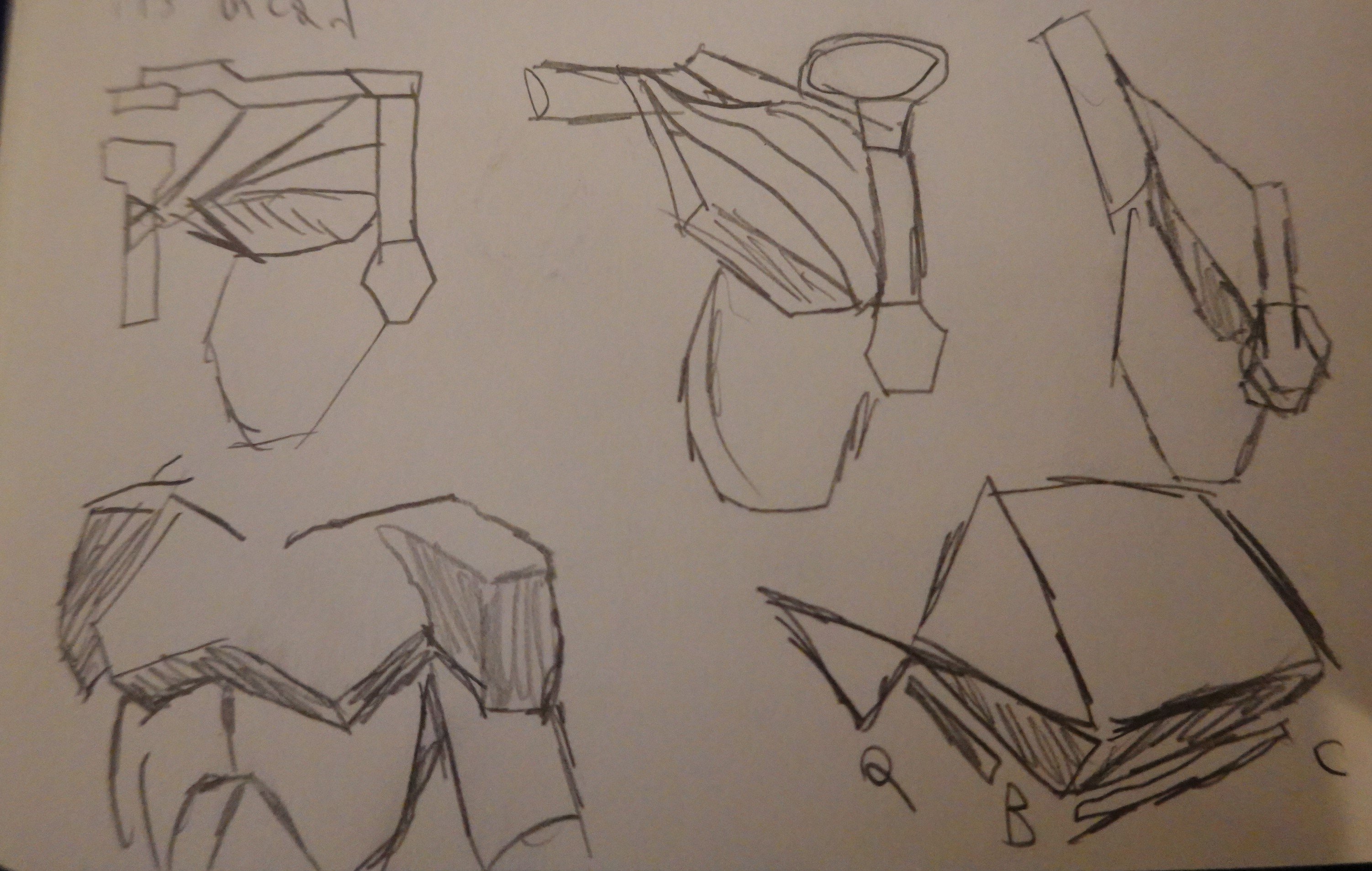
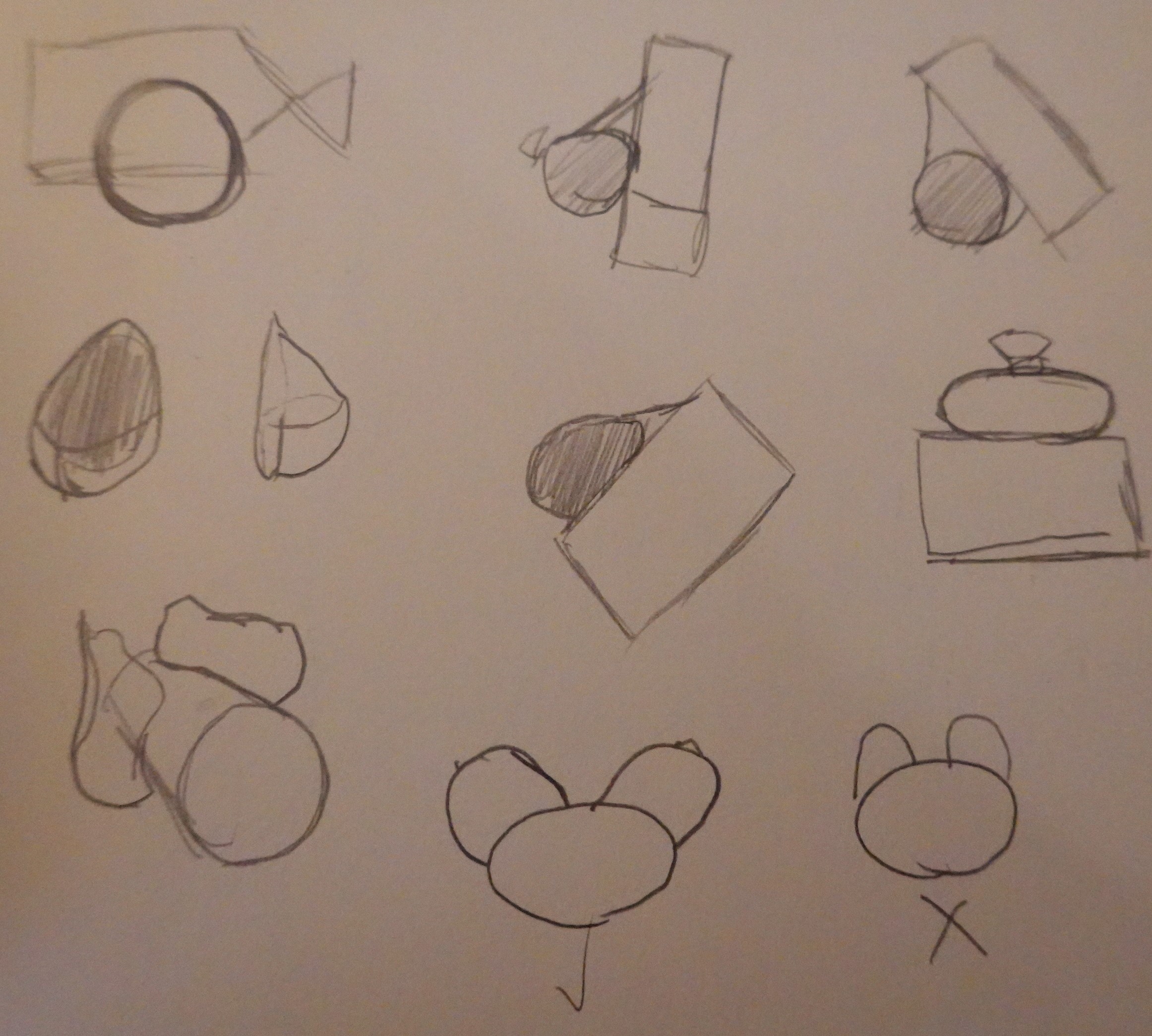
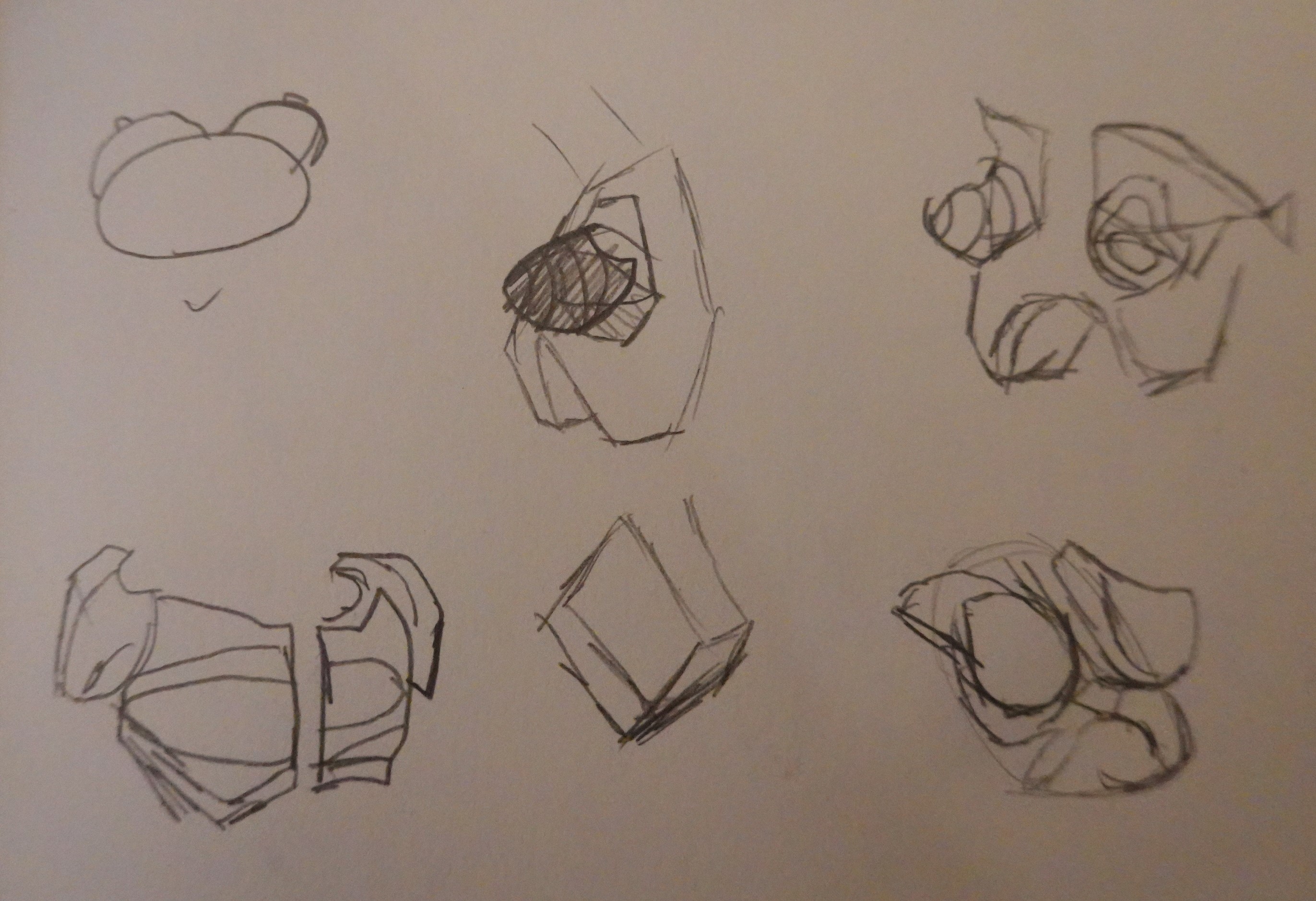
2.4.6 Effect of the external oblique muscles on body performance
Location: Superficial layer of the anterior and lateral abdominal wall muscle fibers run obliquely from outside to front and inside to below.
Starting point lateral surface of 5 rib to 12 ribs.
End points Iliac crest pubic tubercle and linea alba, its aponeurosis contributes to the formation of the interior wall of the rectus sheath.
When drawing the external obliques we can imagine as two rectangular pieces of jelly beans that support the rib cage above pelvis.
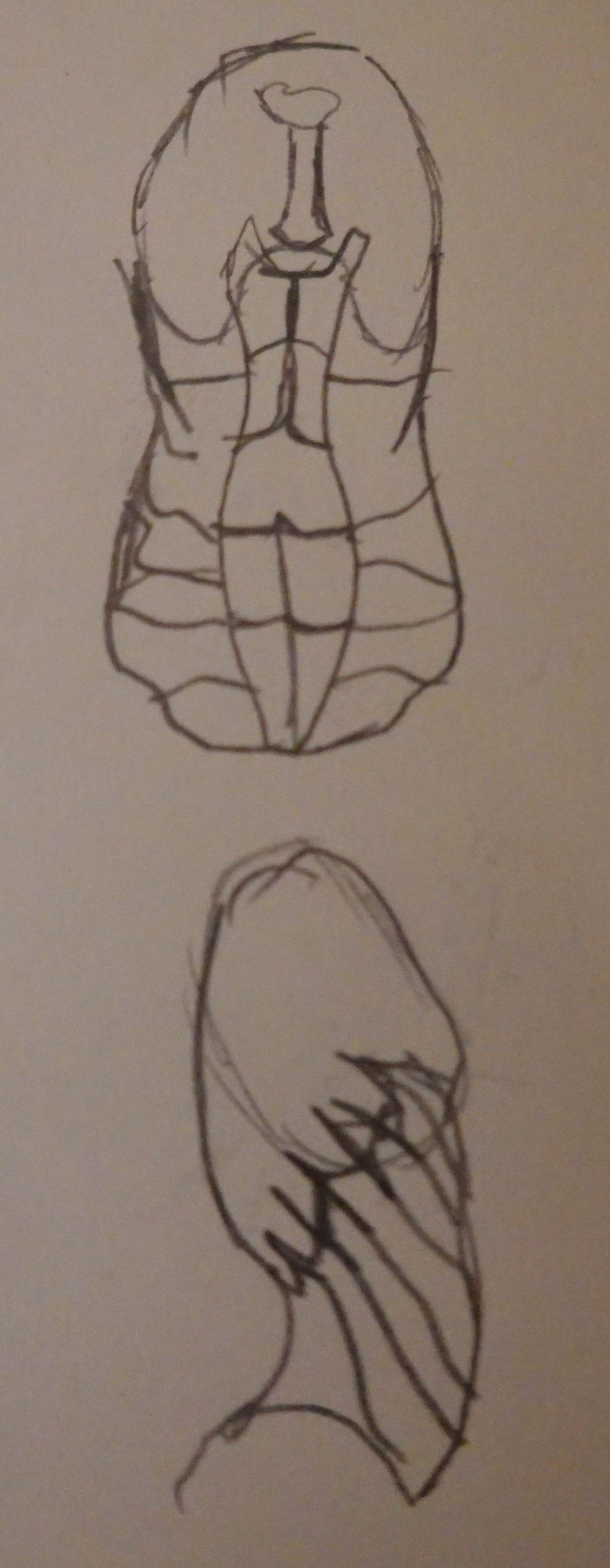
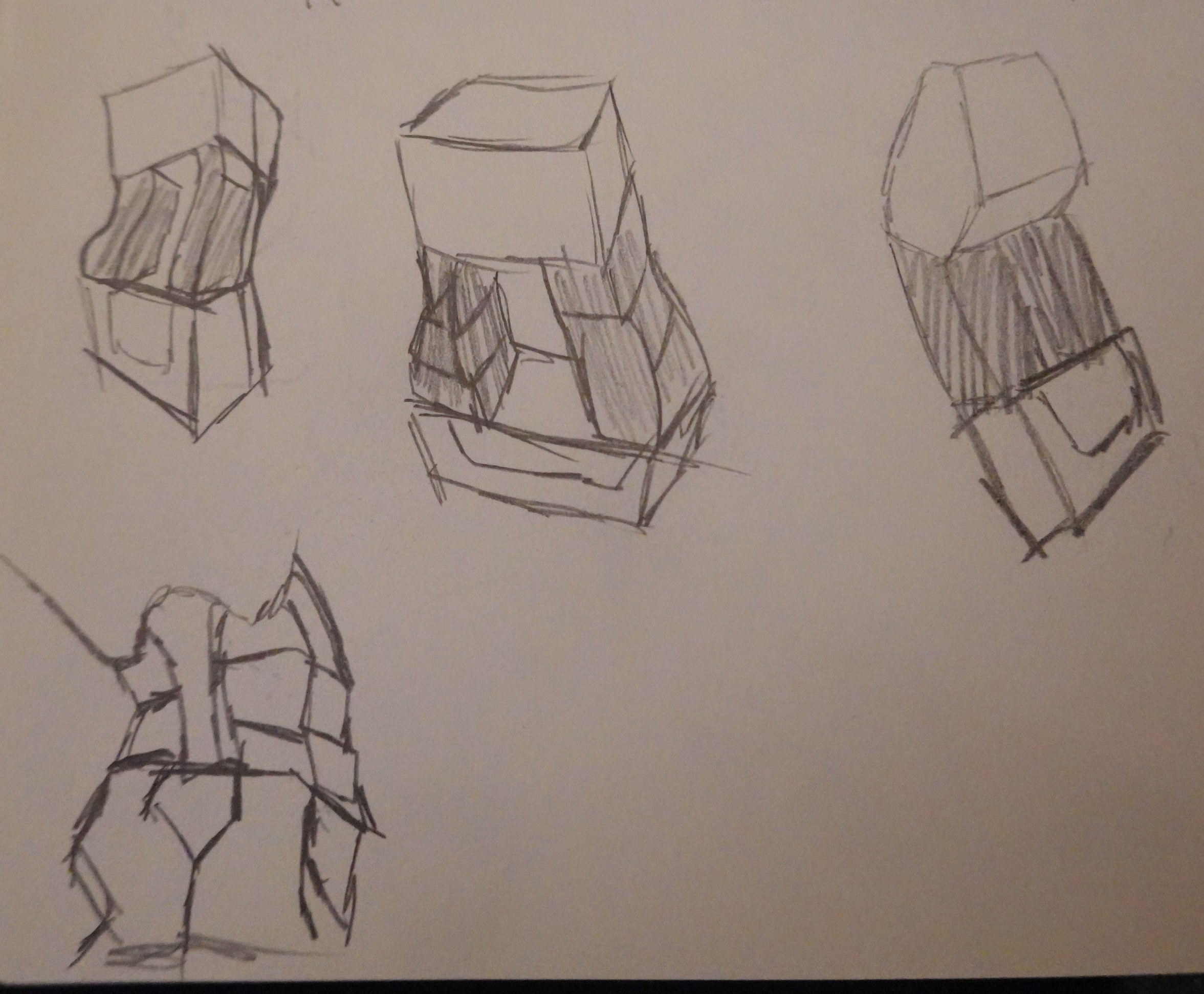
2.4.7 The influence of the rectus abdominis muscle on body surface performance
Location: Both sides of the midline anterior abdominal wall
Starting point upper edge of pubic bone
Insertion point xiphoid process of sternum and front of 5 to 7 costal cartilages.
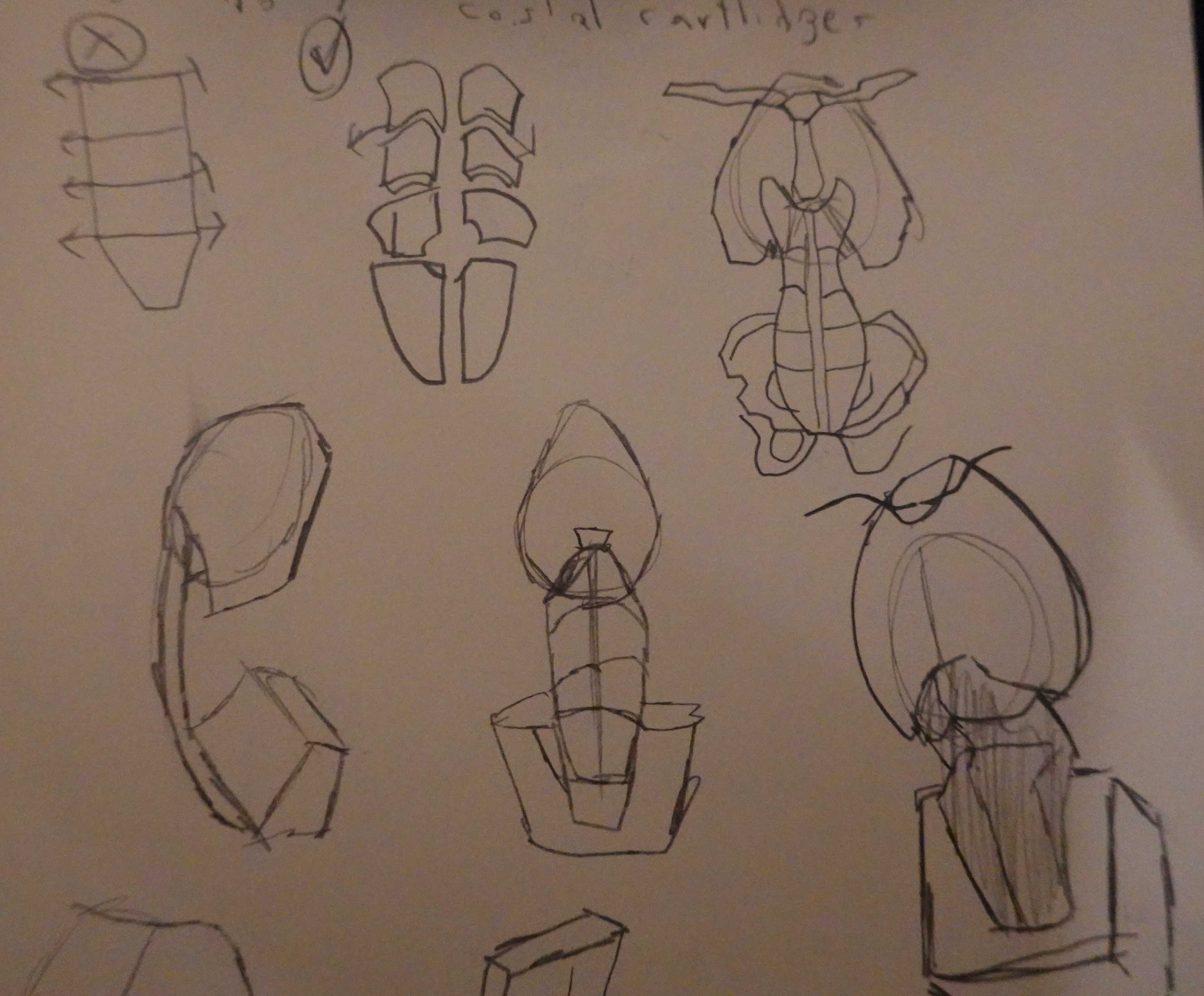
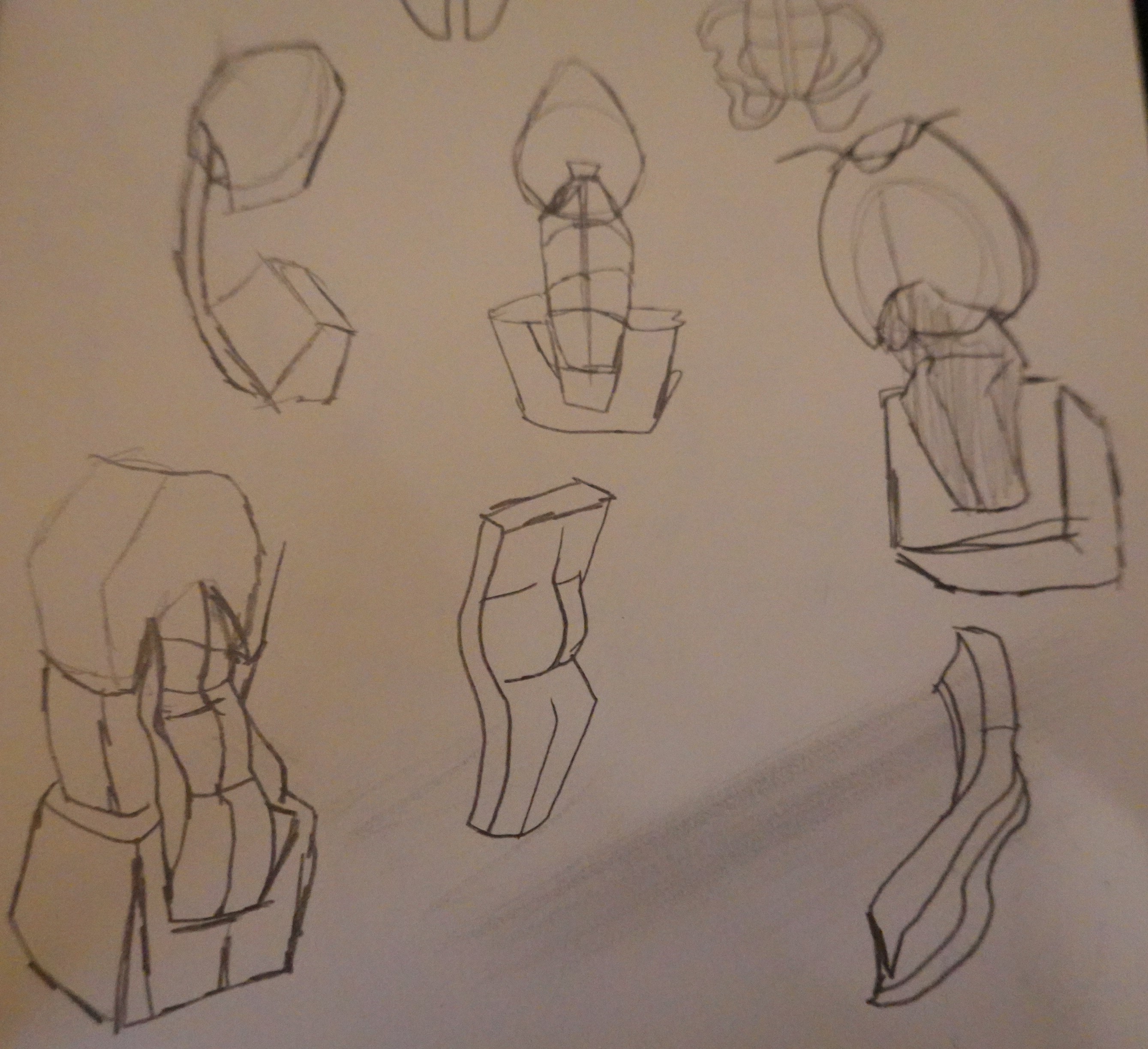
2.4.8 Effects of erector spinae muscles on body surface performance
The spinal cord muscle can be simplified to two sausages placed side by side
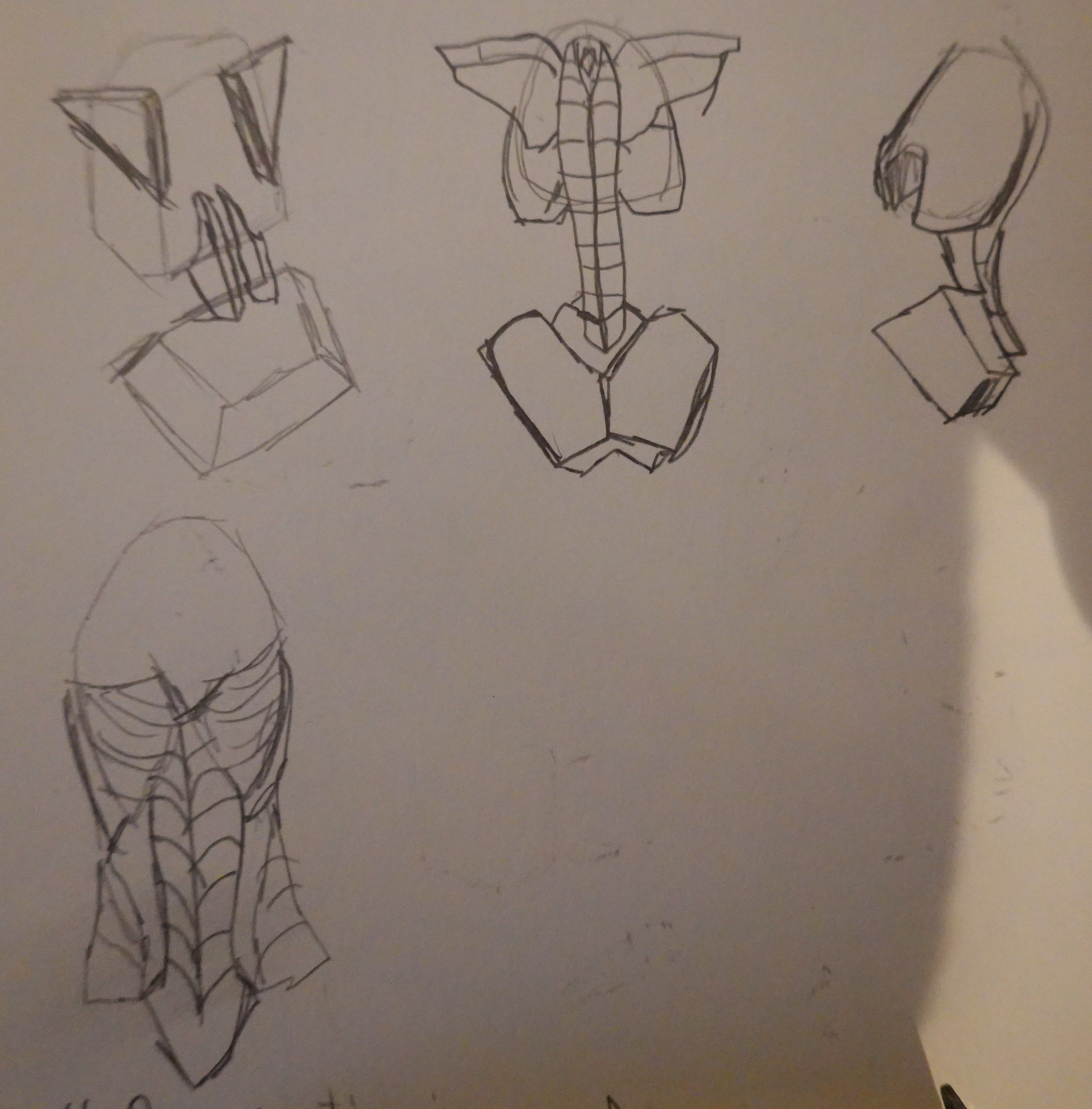
2.4.9 Latissimus Dorsi
We can remember the latissimus dorsi and the trapezius muscle together.
Trapezius muscle = sword
Latissimus dorsi = shield


2.4.10 Gluteus maximus on the body surface performance
Back view, buttocks looks like a butterfly
Side view, they like a horn wrapped around the thighs

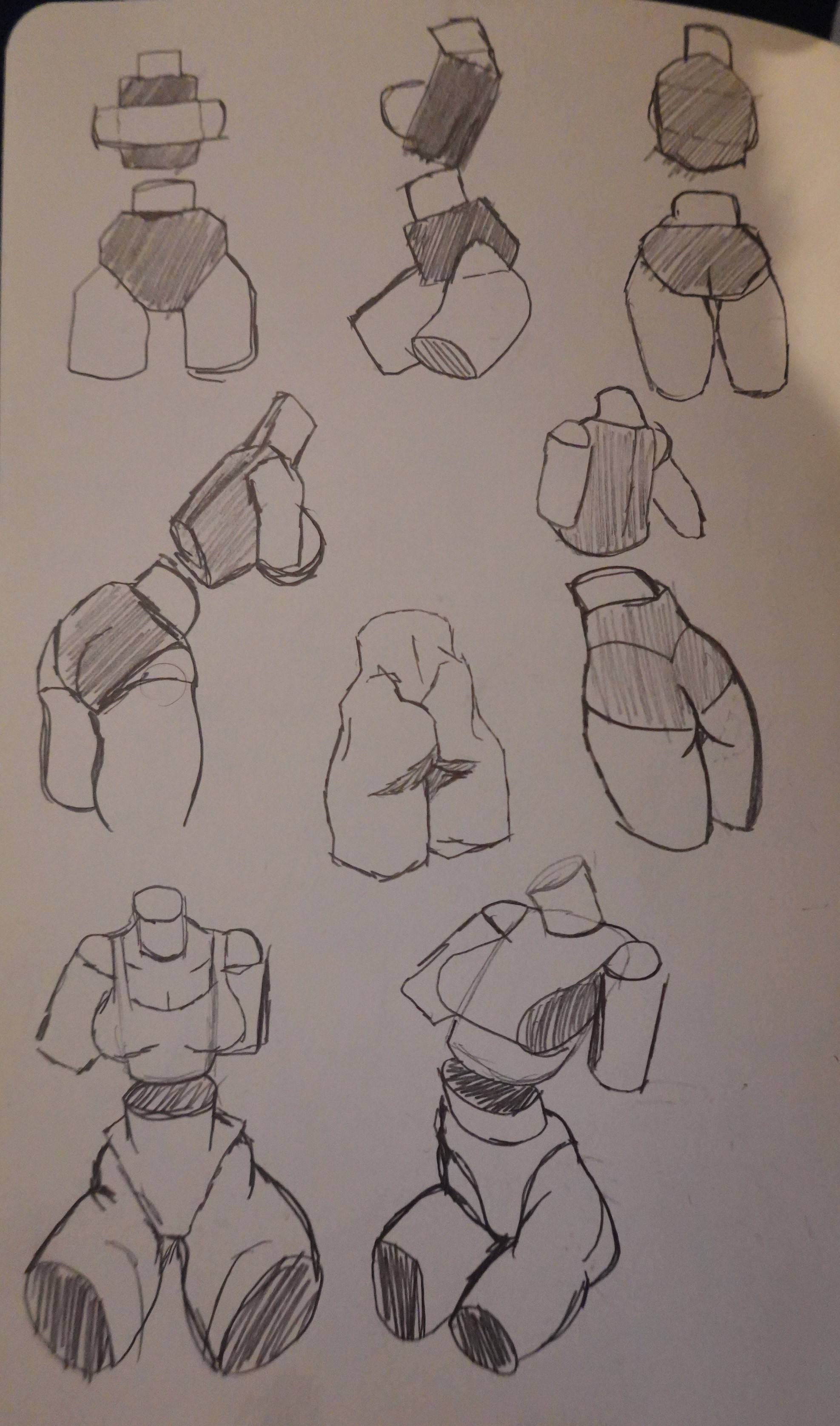

2.4.11 Serratus anterior muscle
Fan shaped shell shape
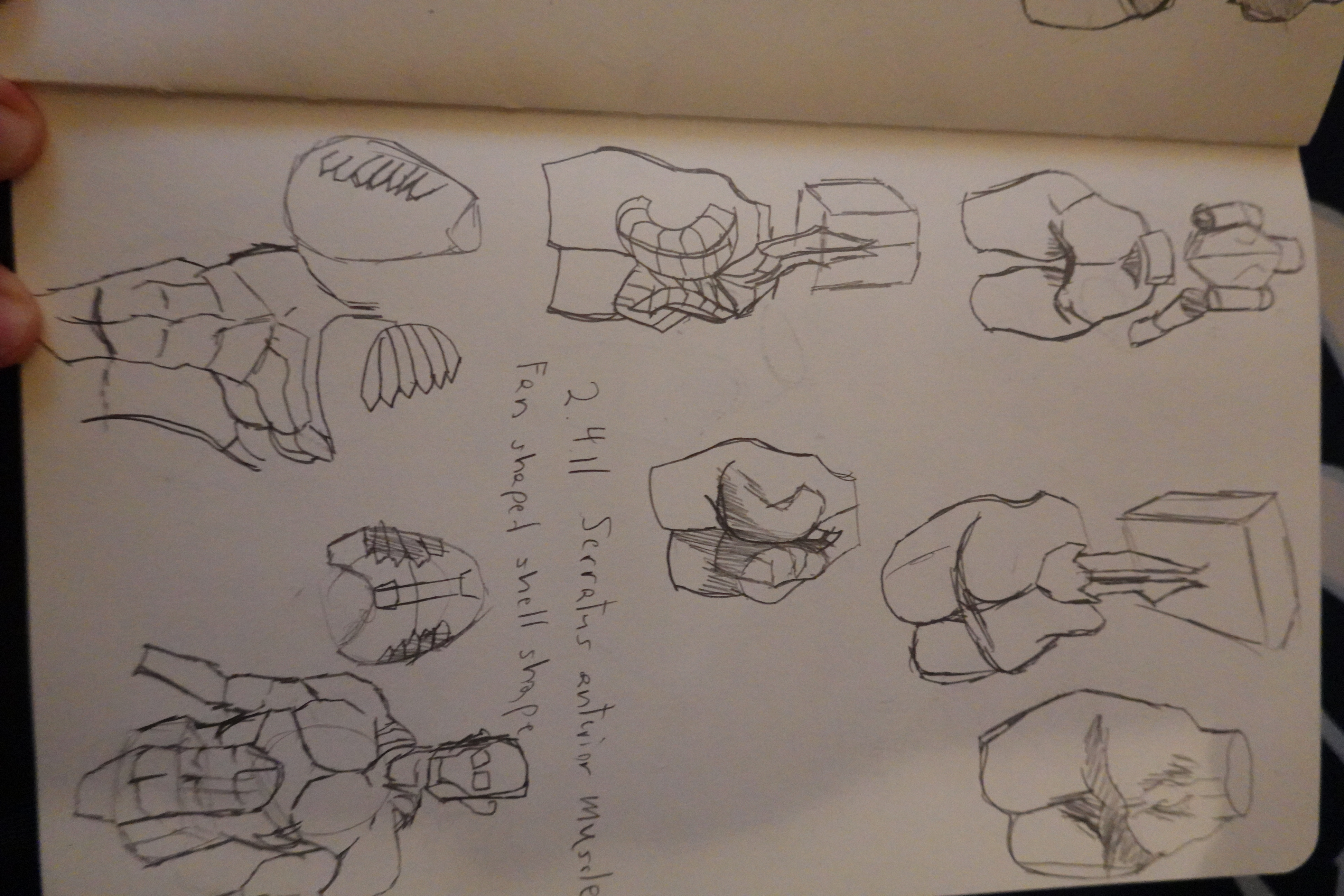
2.5.0 Simplifying the Torso and muscles
2.5.1 Simplify the torso block structure
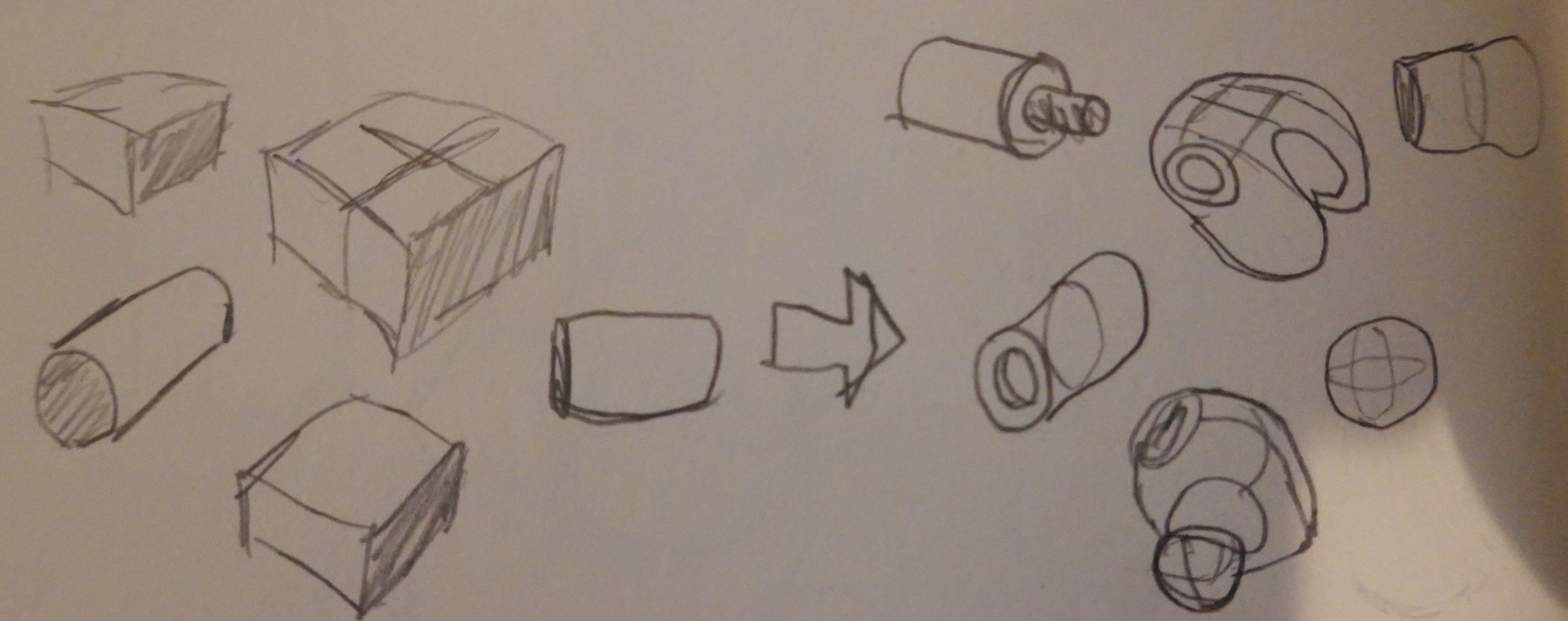
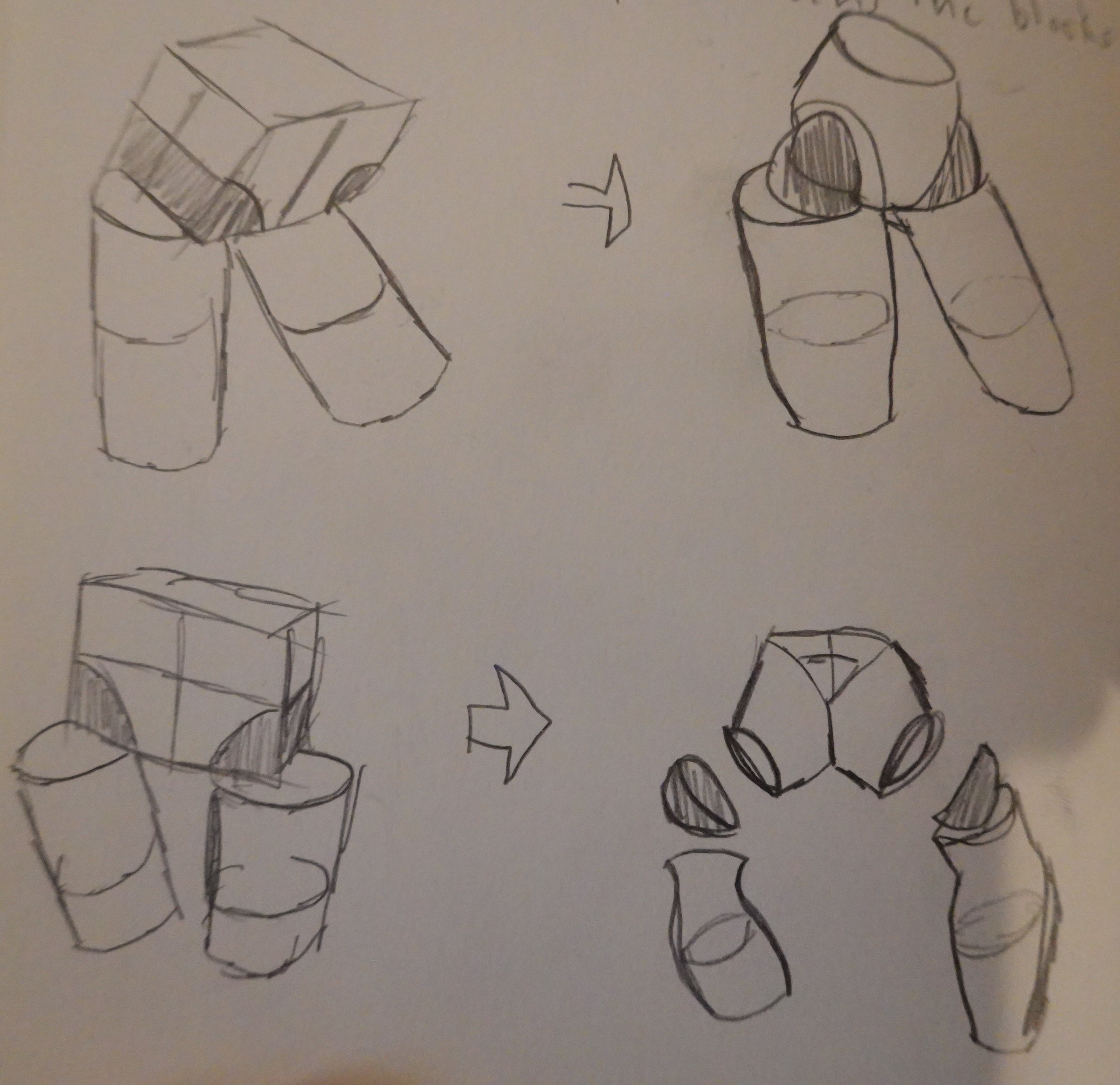
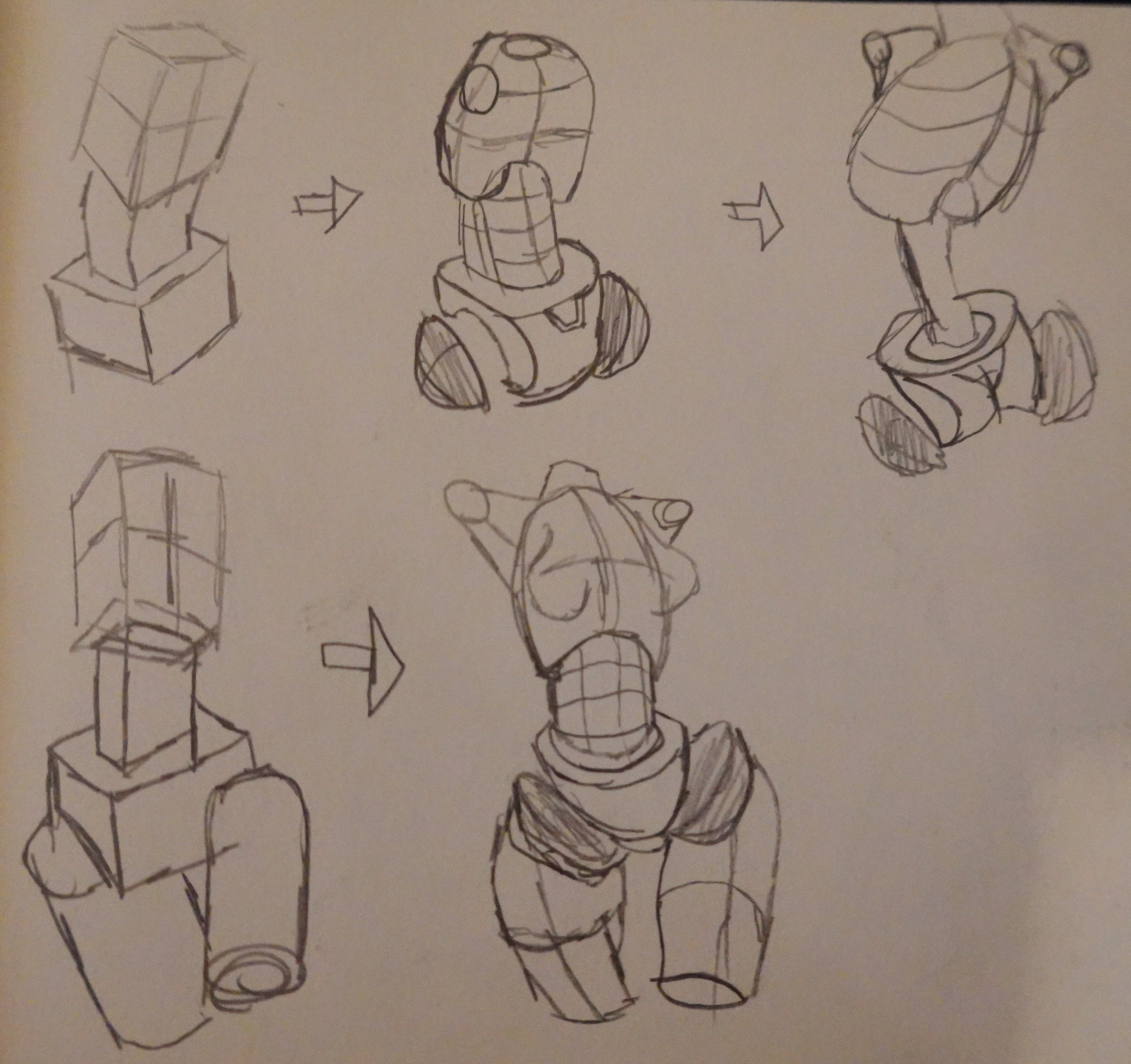
2.5.2 Simplifying the trunk muscle structure
The muscle structure inside the torso can be broken down into geometric blocks, which helps to strengthen memory and facilitate understanding
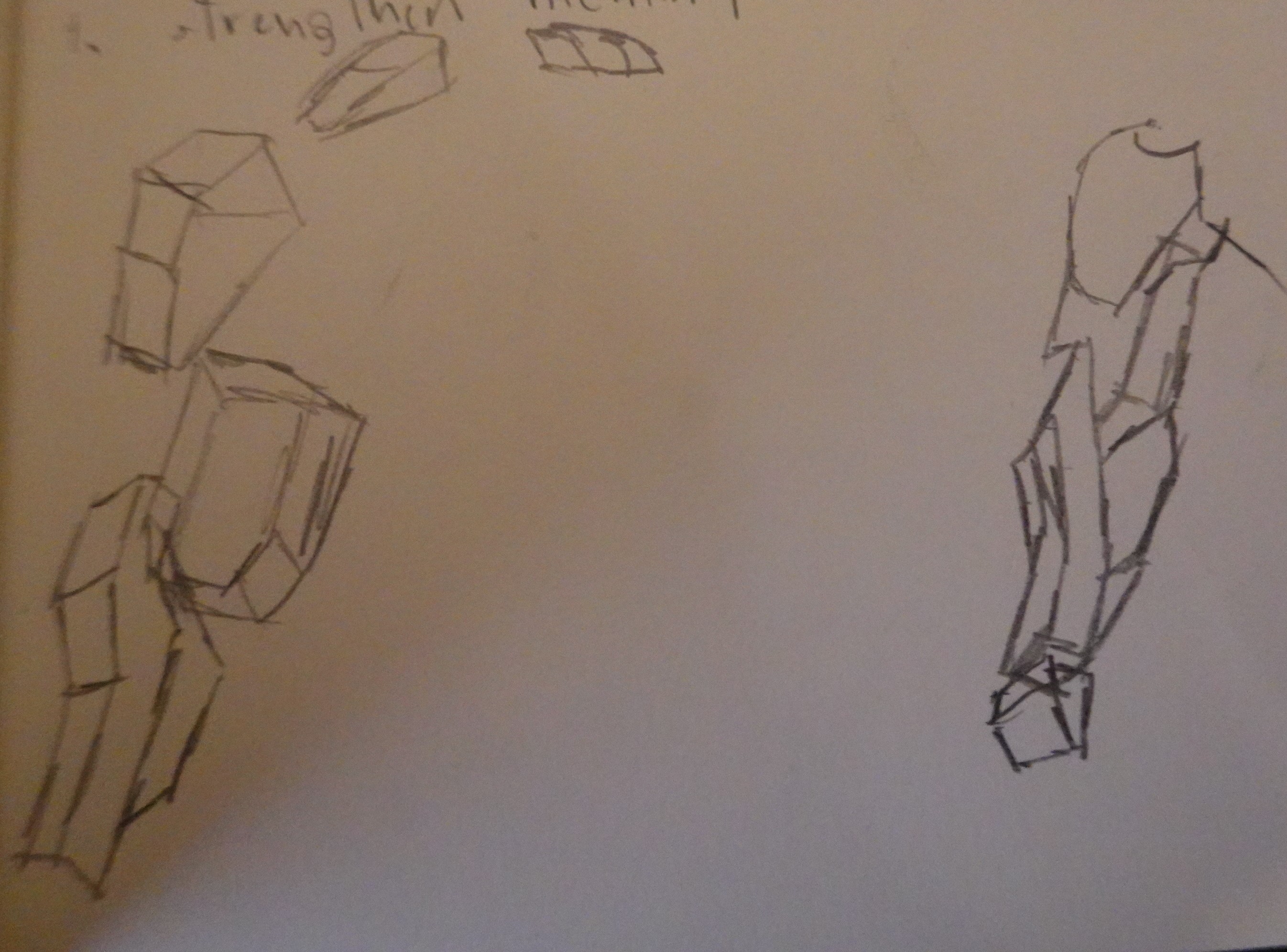
2.6 Torso Twist and Dynamic Performance
4 categories, Left and Right, Backwards, Forward, Twist
2.6.1 Left and Right Bending
When drawing the torso bending right and left, pay attention to the changes in external oblique muscles and rectus abdominis muscles
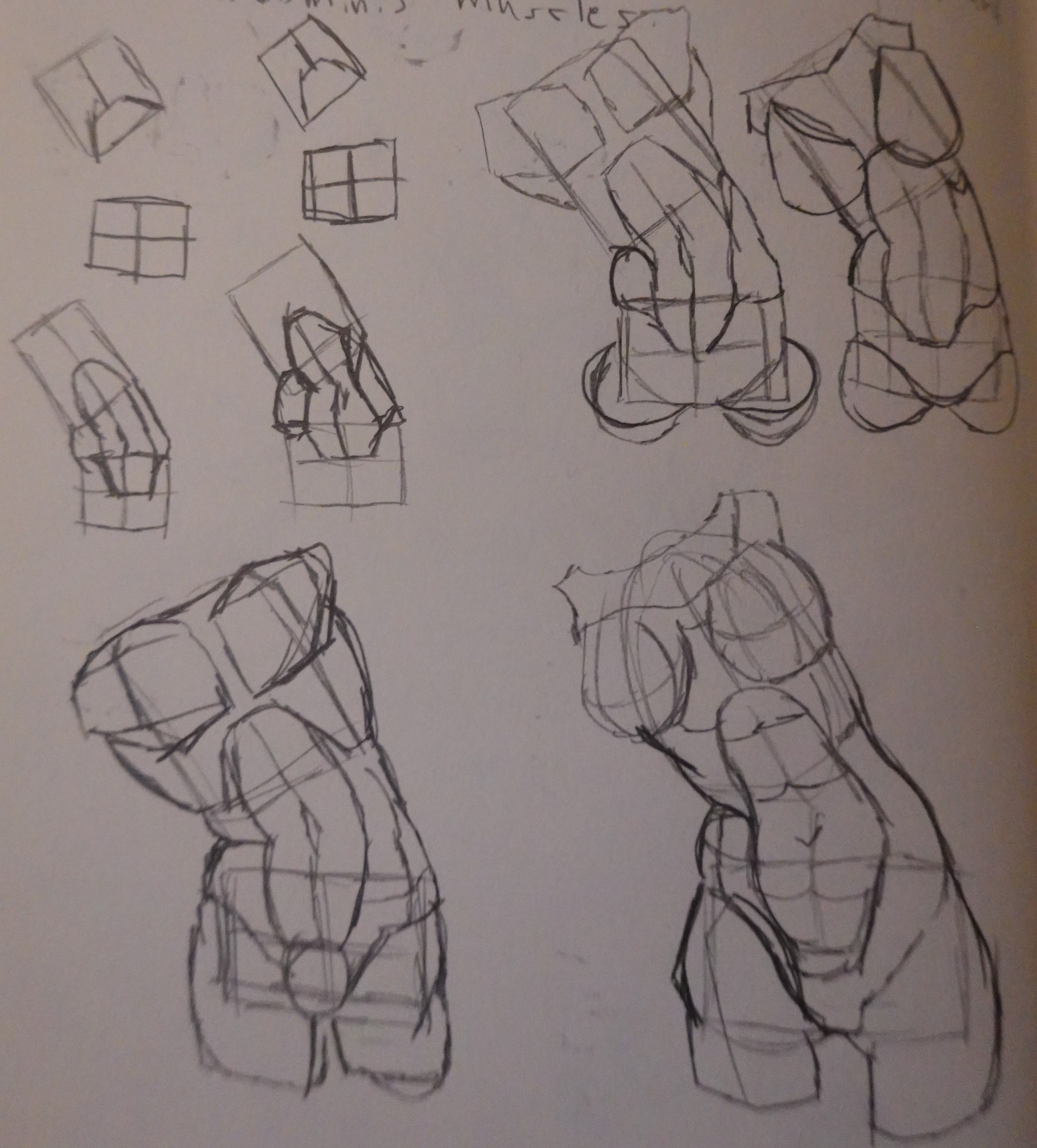
2.6.2/2.6.3 Bending Backwards and Forwards

